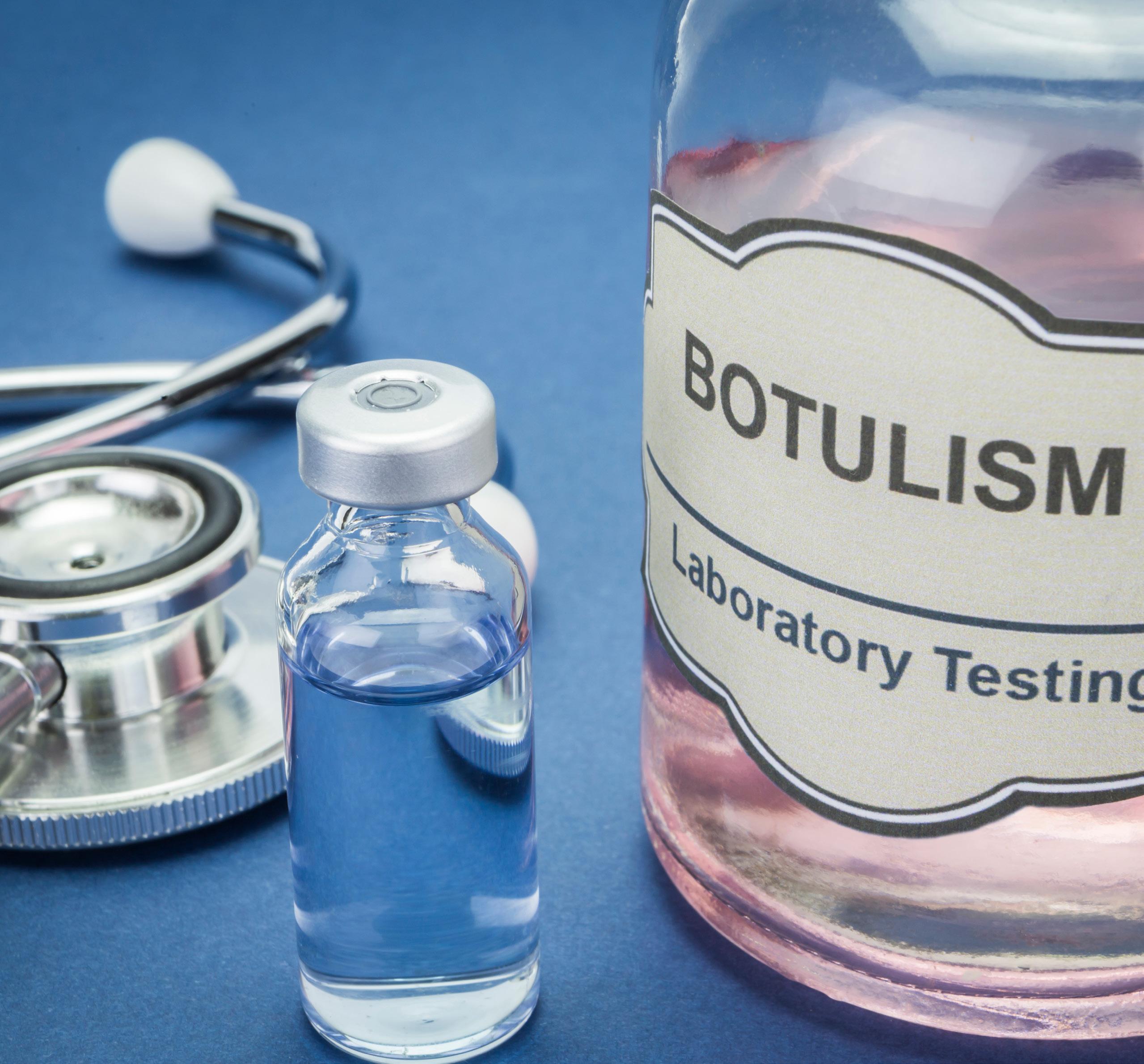







Pharmacologist A Publication by The American Society for Pharmacology and Experimental Therapeutics Vol. 65 • Number 1 • March 2023 the
Profile: Margaret Gnegy 2023 Annual Meeting A Tribute to Former ASPET EO Kay Croker INSIDE
Botulism
Botox
Leadership
From
to
The Pharmacologist Content Deadlines

March Issue: February 1
June Issue: May 1
September Issue: August 1
December Issue: November 1
Catherine L. Fry, PhD
Lynne Harris, MA, APR
Dave Jackson, MBA, CAE
Maria Pasho
COUNCIL President
Michael F. Jarvis, PhD
President Elect
Namandjé Bumpus, PhD
Past President
Margaret Gnegy, PhD
Secretary/Treasurer
Kathryn A. Cunningham, PhD
Secretary/Treasurer Elect
Xinxin Ding, PhD
Past Secretary/Treasurer
Carol L. Beck, PhD
Councilors
Nina Isoherranen, PhD
Randy A. Hall, PhD
John R. Traynor, PhD
Chair, Publications Committee
Kenneth Tew, PhD
Chair, Program Committee
Michael W. Wood, PhD
FASEB Board Representative
Catherine M. Davis, PhD
Inclusion, Diversity, Equity & Accessibility Representative
Martha I. Dávila-Garcia, PhD
Chair, Young Scientists Committee
Dianicha Santana, PhD
Executive Officer
Dave Jackson, MBA, CAE
The Pharmacologist (ISSN 0031-7004) is published quarterly in March, June, September, and December by the American Society for Pharmacology and Experimental Therapeutics, 1801 Rockville Pike, Suite 210, Rockville, MD 20852-1633. Annual subscription rates: $25.00 for ASPET members; $75.00 for U.S. nonmembers and institutions; $100.00 for nonmembers and institutions outside the U.S. Single copy: $25.00. Copyright © 2023 by the American Society for Pharmacology and Experimental Therapeutics Inc. All rights reserved. GST number for Canadian subscribers: BN:13489 2330 RT.
ASPET assumes no responsibility for the statements and opinions advanced by contributors to The Pharmacologist.
Postmaster: Send address changes to: The Pharmacologist, ASPET, 1801 Rockville Pike, Suite 210, Rockville, MD 20852-1633.
The Pharmacologist is published and distributed by
for Pharmacology
Experimental Therapeutics Contents
the American Society
and
THE PHARMACOLOGIST PRODUCTION TEAM
1 Message from the President 3 Leadership Profile: Margaret Gnegy, ASPET Past President 5 Election Results 6 Annual Meeting 16 2023 Award Winners 22 Feature Story: From Botulism to Botox 32 Science Policy News Meet the 2023 ASPET Washington Fellows 37 Journal News 45 Membership News 48 A Tribute to Former ASPET Executive Officer Kay Croker 49 Members in the News 51 Division News 2023 ASPET Division Elections Division-Sponsored Awards
Message from The President
As Spring approaches, ASPET has much going on, and I am excited to share some key highlights with our membership.
The ASPET 2023 Annual Meeting will be held May 18-21 at the St. Louis Union Station Hotel. In addition to many innovative scientific, professional development and educational sessions in the program (https://www.aspet.org/ meeting/program), all meeting attendees will receive a ticket to the ASPET 2023 Opening Event at the St. Louis Aquarium, the business meeting breakfast, the awards lunch and three poster receptions during the meeting. Registration is open, and I encourage all to register as soon as possible. This year’s meeting contains many new features as well as ground-breaking science and is not to be missed.
The ASPET elections results are in. Please join me in congratulating this year’s class of leaders on Council and across the ASPET Divisions (see page 5). I welcome Carol Beck, PharmD, PhD, as President-Elect, Pamela Janet Hornby, PhD as Secretary/Treasurer-Elect, and Amy Arnold, PhD as Councilor. I extend a warm welcome to the new Division leaders (page 51). The ASPET Divisions are integral to our Society’s diverse membership and are an excellent resource for expertise across in their respective pharmacology research areas. Members are encouraged to engage with their respective Divisions as it’s a great way to become more involved in ASPET activities and initiatives. Let’s also celebrate this year’s Scientific Achievement and Divisional Award winners (see page 16) for their groundbreaking research and their work to advance the discipline of pharmacology.

I also want to thank the membership for their approval of the Revised ASPET Bylaws. This represents an important milestone for ASPET, which will modernize and streamline operation of the Society. Importantly, the new Bylaws will also ensure a greater level of transparency and opportunities for member engagement in the operation of the Society.
ASPET has many ongoing activities that positively impact pharmacology as a discipline and the professional development of our members. I am delighted to welcome the 2023 class of Washington Fellows. These early career scientists bring a diversity of experiences to their new journey in science advocacy. Please read their inspiring biographies here https://www.aspet.org/aspet/advocacy/aspet-washington-fellows-program/meet-the2023-aspet-washington-fellows. Each year, the Washington Fellows work tirelessly to advance ASPET’s values and mission with lawmakers and other policy stakeholders. Kudos to Carter Alleman, Director of Government Affairs and Science Policy and the Science Policy Committee for all their efforts to advocate for ASPET and policies central to our mission. As an example, ASPET recently joined 283 other science organizations to support extension of the base funding for NIH research.
Other outreach activities include opportunities for interactions with allied associations. Dr. Catherine Fry, Director of Education, recently attended the Association of Medical School Pharmacology Chairs (AMSPC) Annual Meeting to explore potential collaborations on new biomedical education models. Additionally, ASPET is evaluating the current and future state of its interactions with its Regional Chapters. ASPET’s Regional Chapters offer many valuable and innovative educational and networking experiences for their members that would be mutually beneficial for the wider ASPET Community.

1 The Pharmacologist • March 2023
ASPET’s journals have had several new additions in recent months. I would like to extend a warm welcome to Dr. John Tesmer as the new Editor for Molecular Pharmacology and Dr. Ai-Ming Yu as an At-Large member of the Publications Committee. Both are highly regarded scientific leaders and I look forward to contributions to ASPET’s journals in the years ahead. I also want to recognize the new Associate Editors and Editorial Advisory Board members who have recently joined the editorial boards of ASPET’s journals. The contributions of these excellent scientists are critical to building the scientific impact of ASPET’s journals.

In the coming months, ASPET’s membership can expect to learn more about other important initiatives including our new Strategic Plan. The 2023 Strategic Plan will support and align many existing and new ASPET activities that are designed to foster inclusive participation in all ASPET activities and enhance the range of ASPET’s impact in the biomedical research community. We have also begun work with the Nova Collective, a woman-owned, BIPOC-led company devoted to guiding organizations through their inclusion, diversity, equity, and accessibility (IDEA) journeys to create lasting change. Another new initiative that ASPET members will see shortly is a Call for Volunteers. ASPET has always benefited from the dedication and commitment of our highly capable volunteers. The Call for Volunteers will build upon this success by better matching volunteer interests with the needs of ASPET’s Committees. This new process will also provide members with increased opportunities to participate at all levels of ASPET’s operations.
I also want to remind everyone about the upcoming IUPHAR World Congress of Pharmacology, July 2-6, 2023, in Glasgow, Scotland, United Kingdom. Our colleagues at the British Pharmacology Society and IUPHAR have organized a truly exciting meeting. A link to the meeting program is provided here: https://wcp2023.org/ programme/. At this year’s meeting over a dozen keynote, plenary and symposia will be presented by eminent ASPET members and cover many cutting-edge topics including advances in structural biology, pharmacology education, inflammation, immunology, virology and the experimental pharmacology of precision medicine.

As all can see, there is a lot under way at ASPET. All these efforts are critical to building the future of the Society. I look forward seeing everyone at ASPET 2023 in St. Louis.
Sincerely,
Michael F. Jarvis, PhD ASPET President
The Pharmacologist • March 2023 2
Leadership Profile



A Conversation with ASPET Past President Margaret E. Gnegy, PhD

Dr. Margaret E. Gnegy, PhD, is Emeritus Professor in the Department of Pharmacology at the University of Michigan Medical School. Dr. Gnegy currently serves on the ASPET Council as Chairperson of the Nominating Committee and Chair of the Council of Division Chairs. Dr. Gnegy has been a member of ASPET for decades. She was elected as a Councilor in 2014 and as Secretary/ Treasurer-Elect in 2017 before being elected as President-Elect in 2021. Meet Dr. Gnegy.
How did you get started in pharmacology?
As is still true of many, I had no idea what pharmacology was when I was an undergraduate student. I learned something about pharmacology as I was working on my doctoral thesis in biochemistry in a medical school. As I neared completion of my thesis, a professor in the Department of Pharmacology made me aware of biochemical and pharmacological research in the brain. Fascinated, I embarked upon an entirely new line of research for my postdoctoral studies and joined the Laboratory of Preclinical Pharmacology at NIMH in the laboratory of Dr. Erminio Costa. I fell in love with neuropharmacology during those years. When it came time to look for a job, my connections from Dr. Costa’s lab led me to pharmacology departments. Having never taken a pharmacology class, I had to learn a lot of pharmacology rather quickly. Pharmacology and I were
a happy pairing; I truly love it. Nearly 50 years later, I am as enthusiastic about the discipline now as when I entered it.
How did you first get involved with ASPET?
My postdoctoral work was in the area of pharmacology and ASPET was the primary meeting for the laboratory. At that time, ASPET had two meetings a year, a smaller fall meeting and the larger Experimental Biology meeting in the spring. Members of my laboratory would attend both. When I became an Assistant Professor in Pharmacology at the University of Michigan, it was natural to keep attending ASPET meetings. My students always thoroughly enjoyed ASPET meetings; they especially enjoyed the exposure to and approachability of the scientists at the meetings. I was asked at some point to be on a nominating committee, which was structured totally differently from the nominating that exists at present. I wanted to keep involved in ASPET but in naivete, I thought I needed to be asked. At some point, I was disabused of that notion and ran for Council. I have very much enjoyed serving on ASPET committees and having a leadership position in the Society. I encourage everyone to do so. ASPET loves volunteers, so step up and don’t be shy. It’s very rewarding and the camaraderie with peers is wonderful. Plus, you can help craft the future of pharmacology.
3 The Pharmacologist • March 2023
What do you want the ASPET membership to know about you and your ideas on how to move the organization forward during your term?
I am very proud of the changes that ASPET underwent during my term. If one would look back to the platform on which I ran, one would see that definite progress in the areas I felt were keenly important. One of my main messages was the need for diversity and inclusivity with those terms defined quite broadly. We now have a DEI task force which I anticipate will be reformulated into a standing committee, the head of which will sit on Council. As part of inclusivity, I have always been interested in expanding ASPET membership beyond academia; new attention is being focused on recruiting those in pharma, biotech, government and various types of consulting and providing programming in those areas.
ASPET underwent a large sea change during my presidency. A new Executive Officer was hired to replace the retiring EO, and more staff was hired as well. New leadership brings new ideas and our current EO, David Jackson, has approached his job with vigor and initiative. The staff is energized as well and is working to increase the value of ASPET and service to our members. We have a new strategic plan that will move ASPET forward in exciting ways and establish its leadership in the discipline of pharmacology. The real success of the mission, however, depends on the members as well as staff. So, I reiterate my call (above) for volunteers and for many of you to move on to ASPET leadership. I found it totally worthwhile.
What has been your proudest accomplishment in your career so far?
I absolutely loved doing research and am proud of my scientific contributions. However, my proudest accomplishment has been successful mentoring of my students. I realized this, of course, as my career progressed. I was blessed with many wonderful students, and it’s been my pleasure and privilege to shepherd them in their careers. I have tried to do my best as a mentor and send them off with skills and understanding that would lead to successful careers, with a few life skills in addition. I think I have done this. I’ve also mentored young faculty. I’m very proud of my mentees.
What advice would you give young scientists who are just starting out in their careers?
The obvious piece of advice seems trite, but it is true. Have a passion for what you want to do. That makes working so much easier and more fun. I had many frustrating times in academia but I always realized I loved the career. I knew I wanted to be a Professor from the time I was 14 and I have not doubted that it was what I was meant to do. The other key piece of advice is to listen. Listen to the advice that your mentors and colleagues give to you, whether you are a student or working in a job. Intellect will carry you only so far; you need to understand the workings of your environment. What is the best way to advance in your career? What are the intangibles that will assure your success? Keep your hubris in check; listen and learn. I’ve seen many people fail in the workplace because they didn’t listen.
The Pharmacologist • March 2023 4
"The obvious piece of advice seems trite, but it is true. Have a passion for what you want to do. That makes working so much easier and more fun."
2023 Election Results
The 2023 ASPET election closed on February 10, 2023. Thank you to all of the members who used this opportunity to cast a ballot for the future of the Society by transforming their vote into action. Congratulations to newly elected Council members Dr. Carol Beck, Dr. Pamela Hornby and Dr. Amy Arnold.
President-Elect
Carol L. Beck, PharmD, PhD



Associate Professor, Department of Pharmacology, Physiology, and Cancer Biology, Sidney Kimmel Medical College at Thomas Jefferson University
Associate Dean for Curriculum and MS Programs, Program Director, MS-Pharmacology: Jefferson College of Life Sciences
Secretary/Treasurer-Elect
Pamela Janet Hornby, PhD

Senior Principle & Fellow (retired), CV & Metabolic (CVM), Janssen R&D, LLC.
Professor (ADJ), Department of Physiology & Pharmacology, of Physiology and Pharmacology, College of Medicine, Drexel University

Councilor
Amy C. Arnold, PhD
Associate Professor, Department of Neural and Behavioral Sciences, Pennsylvania State University College of Medicine

5 The Pharmacologist • March 2023
ASPET 2023 Annual Meeting
Join us in St. Louis for an exciting and interactive program highlighting the highest quality, innovative science in pharmacology and experimental therapeutics.
Re-designed by ASPET members for the pharmacology and experimental therapeutics community, the ASPET Annual Meeting will deliver a valuable, inspiring, fun experience, so everyone feels the warm welcome of ASPET, your home for pharmacology.
Program
Visit www.aspet.org/meeting/program/program-details for full session and speaker information.
THURSDAY, MAY 18
2:00 pm – 4:30 pm
Opening General Session
Featuring keynote by Holden Thorp, PhD
“Understanding Anti-Science: Why Scientists Should Learn History”
5:00 pm – 7:00 pm
7:00 pm – 9:00 pm
FRIDAY, MAY 19
8:00 am – 9:00 am
9:00 am – 10:00 am
Poster Presentations and Mixer
Opening Event at the Aquarium
Business Meeting and Breakfast
Keynote by William G. Kaelin, Jr., MD
“The VHL Tumor Suppressor Protein: Insights into Oxygen Sensing and Cancer”
Break 10:30 am – 12:00 pm
10:00 am – 10:30 am
Concurrent Sessions
• “Guppy Tank” Translational Science Pitch Showcase
• Cell-Cell Communication in Heart Failure and Therapy
• Evolution of Psychedelics: Molecules Inspired by 5-HT2 Receptor Biology
• Transporter Regulations and Their Role in Drug Disposition and Interaction
12:00 pm – 1:00 pm Break
The Pharmacologist • March 2023 6
Friday, May 19 continued
1:00 pm – 2:30 pm
Concurrent Sessions
• Revolutionary Tools to Unveil Undruggable Therapeutic Targets
• Recent Advances in Orphan GPCR Structure, Signaling and Pharmacology
• Advances in ADME and Toxicity Biomarkers
• Adipose Tissue Connects Dysbiosis to Heart Disease: Sex Differences?
2:30 pm – 3:00 pm
3:00 pm – 4:30 pm
Break
Concurrent Sessions
• Molecular Mechanism of Cardiac Aging
• Pharmacology of Opioid/Stimulant Co-abuse: From the Lab to the Clinic
• ADME of Biological Therapeutics for Drug Discovery and Development
• Teaching Blitz
4:30 pm – 5:00 pm
5:00 pm – 7:00 pm
SATURDAY, MAY 20
8:00 am – 9:00 am
Break
Poster Presentations and Mixer
9:00 am – 10:30 am
Keynote by Yasmin Hurd, PhD
“Translating Addiction: Neurobiological Insights to Risk and Therapeutic Interventions”
Concurrent Sessions
• Pharmacology in Color Symposium
• Division for Molecular Pharmacology Early Career Award and Postdoc Competition
• Division for Translational and Clinical Pharmacology Young Investigator Awards Platform and Early Career Faculty Showcase
• Division for Toxicology: Can Chemicals Really Make You Obese? Recent Advances and Current Challenges in the Study of Obesogens
10:30 am - 11:00 am Break
11:00 am – 12:30 pm
Concurrent Sessions
• Thinking Outside of the Box: Career Paths for Pharmacologists
• Division for Cancer Pharmacology Young Investigator Symposium
• Division of Drug Metabolism and Disposition Okita Early Career and Gillette Award Lectures and Junior Investigator Platform Session
• Division for Behavioral Pharmacology: Motivation-related Targets for Drug Development
12:30 pm - 1:30 pm Break
Would your company or university benefit from partnering with ASPET?
Opportunities are available for recruiting tables for students or employees, exhibit booths, advertisements, and sponsorships. Learn more at https://www.aspet.org/meeting/partners.
7 The Pharmacologist • March 2023
Saturday, May 20 continued
1:30 pm – 3:00 pm
Concurrent Sessions
• Journals Workshop: Let’s Get Interactive with ASPET Editors
• Division for Cardiovascular Pharmacology Trainee Showcase featuring the Benedict R. Lucchesi Young Scientist Awardee
• Division for Drug Discovery and Development - Scientific Achievement Award Lecture and Notable Abstracts Platform Presentations
• Division for Neuropharmacology Award Lectures and Postdoctoral Fellow Showcase
3:00 pm – 3:30 pm
3:30 pm – 4:30 pm
Break
Concurrent Sessions
• The Null Hypothesis: The Importance of Showcasing Non Significant Data
• Creating, Delivering and Assessing Online Content
• The NIH Blueprint for Neurotherapeutics Network
• Science Policy and You: How Pharmacologists Can Become Science Advocates
4:30 pm – 5:00 pm
5:00 pm – 7:00 pm
Break
Poster Presentations and Mixer
Career and Professional Development Opportunities
Let ASPET help bring your career to the next level. Some of the ways we are doing that include:
• PEER MENTORING PROGRAM (openings are still available for graduate student and postdoc level mentors. Mentee slots are full.)
• SESSIONS such as:
o Thinking Outside of the Box: Career Paths for Pharmacologists
o Journals Workshop: Let's Get Interactive with ASPET Editors
o Pharmacology in Color Symposium
o The NIH Blueprint for Neurotherapeutics Network
o Science Policy and You: How Pharmacologists Can Become Science Advocates
o Guppy Tank Translational Science Pitches (speaking slots are full but come cheer on your peers)
• CAREER CENTER TABLES to visit with universities who want to connect with potential students, labs looking for scientists, or employers scouting for new team members
• NETWORKING LUNCH FOR TRAINEES for Careers in Drug Metabolism and Disposition (ticket required / limited seating)
• NIGHTLY NETWORKING in the poster hall
The Pharmacologist • March 2023 8
SUNDAY, MAY 21
8:00 am – 9:00 am
Conversations with Awardees
Featuring Drs. Carrie Ferrario, Walter Koch, Lynette Daws, Ian Blair, David Sibley, and Daniela Salvemini
9:00 am – 10:30 am
Concurrent Sessions
• Julius Axelrod Lecture and Symposium: Melatonin Receptors: Molecular Pharmacology and Role in the Modulation of Circadian Disorders
• Space: The Final Frontier for cAMP Signaling
• Muscarinic Receptors in Stages of Alcohol and Substance Use Disorders
• Embracing Diversity, Equity, and Inclusion in Pharmacology Curricula
10:30 am – 11:00 am
11:00 am – 12:30 pm
Break
Concurrent Sessions
• Pharmacology-based Tools Opening New Frontiers in Biological Research
• Impact of the Microbiome and Pathobiome in Drug Metabolism and Disposition
• Therapeutic Targeting Myeloid Cells in Cancer
• Recent Insights into Ion Channel Modulation by Plant Extracts
12:30 pm – 2:30 pm
Awards Presentation Lunch
Celebrate our Scientific Achievement Awardees and learn who has won Poster Awards
Visit www.aspet.org/meeting/program/program-details for full session and speaker information.
9 The Pharmacologist • March 2023
Meet Inspiring Scientists at the ASPET Annual Meeting
THURSDAY, MAY 18, 2:00 PM
Understanding Anti-Science: Why Scientists Should Learn History
The COVID pandemic has brought a stark reminder of the difficulties in convincing the public of scientific facts that conflict with their ideology. An examination of the history of anti-science shows that the patterns that obtained during the pandemic were the same as those that occurred during controversies around evolution, smoking, ozone, and climate change. These patterns are driven by politics but also by the dogma within science to remain objective. To prevent similar episodes in the past, the scientific enterprise needs a reckoning about how consensus within science is managed.
FRIDAY, MAY 19, 9:00 AM
The VHL Tumor Suppressor Protein: Insights into Oxygen Sensing and Cancer
This keynote address will describe new drugs emerging from studies of the VHL tumor suppressor protein (pVHL), which is usually defective in clear cell renal cell carcinomas (ccRCCs). pVHL forms a ubiquitin ligase that targets the alpha subunits of the HIF transcription factor for proteasomal degradation provided they are prolyl hydroxylated by the oxygen-sensitive EglN (also called PHD) 2-oxoglutarate (2-OG)-dependent dioxygenases. HIF2α promotes ccRCC and HIF1α inhibits ccRCC in preclinical models. An allosteric HIF2α inhibitor has advanced to Phase 3 testing in sporadic ccRCC and was recently approved for the treatment of VHL Disease. Conversely, drugs that stabilize HIF are being developed for the treatment of anemia and ischemic diseases (e.g., heart attack and stroke). Dr. Kaelin’s team also recently showed that GPR35 agonists are protective in ischemic models. He will describe their recent efforts to identify new cancer targets based on synthetic lethality and to find protein degraders for “undruggable” oncoproteins.

SATURDAY, MAY 20, 8:00 AM
Translating Addiction: Neurobiological Insights to Risk and Therapeutic Interventions
Decoding the neurobiological underpinnings of psychiatric disorders such as addiction is critically linked to expanding knowledge obtained from the human brain which can inform targeted treatments. The continued opioid epidemic highlights the important need for the development of novel non-addictive, non-opioid medications. The talk will provide molecular insights gained from post-mortem investigations of human opioid users and complementary mechanistic animal studies that identify specific neurobiological marks that offer druggable targets for opioid addiction including aspects of cannabinoid strategies.


The Pharmacologist • March 2023 10
Holden Thorp, PhD
William G. Kaelin, Jr., MD
Yasmin Hurd, PhD
2023 Awardees
SUNDAY, MAY 21, 8:00 AM
Conversations with ASPET Awardees
Join us for an inspiring panel interview featuring our major awardees. Hear about their personal career journeys and what advice they have for scientists at the beginning of their careers with ASPET. We’ll also get a peek at where their science is headed next. The invited panel includes the Abel Awardee, Carrie Ferrario; Axelrod Awardee, Walter Koch; Lehr Research Awardee, Lynette Daws; Pharmacia-ASPET Awardee, Ian Blair; Ruffolo Awardee, David Sibley; Spector Awardee, Kathleen Giacomini, and Weiner Award Lecture, Daniela Salvemini.
SUNDAY, MAY 21, 9:00 AM
Julius Axelrod Lecture and Symposium: Melatonin


Receptors: Molecular Pharmacology and Role in the Modulation of Circadian Disorders
Our 2022 Axelrod Awardee, Margarita Dubocovich has gathered a distinguished group of speakers to complement her Axelrod Award Lecture titled “MT1 and MT2 Melatonin Receptors as Targets for Drugs Modulating Circadian Rhythms.” In addition to the award lecture, the symposium will feature Drs. Ralf Jockers (France), Gloria A Benítez-King (Mexico), and David E. Blask (USA) who will address the molecular and neuropharmacological mechanisms of melatonin receptor function, and the potential of novel melatonin receptor ligands to treat circadian disorders, depression, cancer, and type 2 diabetes among other conditions and diseases.






11 The Pharmacologist • March 2023
Margarita L. Dubocovich, PhD
at https://www.aspet.org/meeting/registration
Registration Discounts End April 20th Register
Networking and Engaging with the Pharmacology Community
ASPET provides unparalleled opportunities to engage with others in the pharmacology community.

Evening Poster Receptions
Enjoy a drink and snacks while exploring the latest science or presenting it yourself! Poster presentations are held Thursday, Friday, and Saturday from 5:00 pm – 7:00 pm with new posters each night. Posters are grouped by divisional topic area and every night includes student and postdoc finalists competing for poster awards. Hear their presentations and discuss the latest research advances.
Opening Event at the Aquarium
ASPET will be making a splash on Thursday night in St. Louis! The Aquarium will be reserved for our exclusive use. Connect with old friends, meet new ones, and journey into the deep.

Give a Day of Service to St. Louis
On Thursday, May 18 from 7:00 am – 1:00 pm, ASPET members will spend the day at the Saint Louis Dream Center as volunteers helping serve the citizens of St. Louis. Sign-up when you register for the meeting. Space is limited and further details will be provided to those who volunteer.

The Pharmacologist • March 2023 12
See the City
Have you been to the top of the Gateway Arch? Did you know St. Louis has the oldest botanical garden in the U.S.? Since our opening session on Thursday, May 18th doesn’t start until 2:00 pm and our program ends on Sunday, May 21 at 2:30 pm, it gives you a half-day to join smaller ASPET groups to do sight-seeing. For sports fans, you’ll want to get your tickets to the Cardinals vs. Dodgers on Friday, May 19 at 7:00 pm or check out the city’s brand-new soccer stadium as the St. Louis City SC faces the Sporting Kansas City on Saturday, May 20 at 8:30 pm.

Generous Breaks Between Sessions
We’ve built 30-minute breaks between sessions into the schedule. You don’t have to rush to find the next session room. Take the time to linger to meet the speakers or chat with other attendees in the session or compare notes with a colleague who attended a different session.

Committee Meetings
Each year over 500 members get involved as volunteers on ASPET committees, task forces, editorial boards, or as reviewers of abstracts, manuscripts, fellowships, and awards. Many of these committees gather during the annual meeting to allow for a more personal connection and discussions than can happen on Zoom. Interested in joining a committee? Be on the lookout for our new online Call for Volunteers launching in March/April of 2023.

13 The Pharmacologist • March 2023
Limited Virtual Program Offered
Unable to join us in St. Louis from May 18-21? A non-synchronous online program is being offered so you can take advantage of some of the great scientific content being prepared by our speakers.
Virtual Program Registration Fees:
The virtual program is included free for everyone registered for the in-person meeting in St. Louis.
$125 ASPET members and non-members
$50 graduate student discounted rate
$25 undergraduate student discounted rate
What’s included in the Virtual Program?
Online Award Lecture Series
These lectures will be presented in real-time, accessible to those who have registered in advance for the annual meeting. Special login credentials will be sent in late April for those who are pre-registered. Attendees will have the opportunity to post questions for the awardees during the session. Recordings of these live presentations will be made available to registrants for on-demand viewing from May 15 through June 15.
Wednesday, May 3 1:00 pm – 2:00 pm Eastern Time
Susan Band Horwitz Award Lecture in Cancer Pharmacology

J. Silvio Gutkind, PhD - University of California, San Diego

Cancer in the New Era of Precision Medicine: Novel Multimodal Targeted and Immunotherapies
Thursday, May 4 1:00 pm – 2:00 pm Eastern Time
Norman Weiner Lecture
Daniela Salvemini, PhD - Saint Louis University Medical School

A Voyage Through the Galaxy of GPCRs Discovers Novel Stars for the Treatment of Neuropathic Pain
May 9
1:00 pm – 2:00 pm Eastern Time
John J. Abel Award in Pharmacology Lecture
Carrie R Ferrario, PhD - University of Michigan Lecture title coming soon.
Wednesday, May 10 11:00 am – 12:00 pm Eastern time
Reynold Spector Award in Clinical Pharmacology and Translational Medicine Lecture
Kathleen M. Giacomini, PhD - University of California, San Francisco
Unlocking the Biological and Pharmacological Roles of Drug Transporters

The Pharmacologist • March 2023 14
Recordings of Annual Meeting Sessions
A limited number of sessions being presented at the annual meeting in St. Louis will be recorded and made available after the meeting from May 30 to June 15 for viewing on-demand by registrants.
Below is a tentative list of sessions in which speaker slides and audio will be recorded. It is subject to change and contingent on speaker permissions and competent technical support.
• Holden Thorp: Understanding Anti-Science: Why Scientists Should Learn History
• William Kaelin: The VHL Tumor Suppressor Protein: Insights into Oxygen Sensing and Cancer
• Yasmin Hurd: Translating Addiction: Neurobiological Insights to Risk and Therapeutic Interventions
• Julius Axelrod Lecture and Symposium: Melatonin Receptors: Molecular Pharmacology and Role in the Modulation of Circadian Disorders
• Evolution of Psychedelics: Molecules Inspired by 5-HT2 Receptor Biology
• Cell-Cell Communication in Heart Failure and Therapy
• Advances in ADME and Toxicity Biomarkers
• Pharmacology of Opioid/Stimulant Co-abuse: From the Lab to the Clinic
• ADME of Biological Therapeutics for Drug Discovery and Development
• Motivation-related Targets for Drug Development
• Scientific Achievement Award in Drug Discovery and Development Lecture
• The Null Hypothesis: The Importance of Showcasing Non Significant Data
Register for the virtual program at https://www.aspet.org/meeting/registration. If you already registered for the full conference taking place in St. Louis, then you are automatically registered for the virtual program too.
Join ASPET April 14-24 for your division’s 2023 online Town Hall.
Learn about the latest activities in your division and how to get involved in shaping the field. Get a sneak peek at annual meeting presentations.
Connect with others who specialize in your research area in small group Zoom breakout rooms where you can turn on your camera to network.
Registration for the online Town Halls is free and non-members are welcome. Reserve your seat at: https://www.aspet.org/meeting/program/division-town-halls

15 The Pharmacologist • March 2023
2023 Award Winners
ASPET awards recognize accomplishments in all areas of pharmacology and experimental therapeutics. ASPET is pleased to honor this distinguished group of Scientific Achievement Award winners for 2023. The awards will be presented at the ASPET Annual Meeting during the Closing Awards Presentation Luncheon on Sunday, May 21, 2023, in St. Louis.
John J. Abel Award in Pharmacology
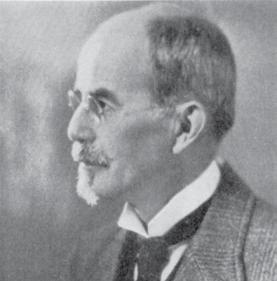
The John J. Abel Award in Pharmacology is named after the founder of ASPET. It was established in 1946 to stimulate fundamental research in pharmacology and experimental therapeutics by young investigators.
Carrie R Ferrario, PhD University of Michigan



Dr. Ferrario is receiving this award in recognition of her groundbreaking studies on the neural mechanisms underlying drug addiction and obesity.
Dr. Ferrario is an Associate Professor of Pharmacology at the University of Michigan (UM). She examines the neurobiological mechanisms of food craving and how these processes are influenced by individual susceptibility to obesity. Her studies address neurobehavioral intersections between overconsumption of food and addictive drugs like cocaine. She has made seminal contributions to the field,
including identifying phenotypic behavioral and neural differences in brain reward centers in obesity-prone vs obesity-resistant populations. Dr. Ferrario received her PhD in Neuroscience from UM, training with Dr. Terry Robinson. She conducted postdoctoral research with Drs. Marina Wolf, Margaret Gnegy and Les Satin examining addiction, glutamatergic plasticity and the role of glutamate receptors in traumatic brain injury. Her scientific contributions are acknowledged by receipt of a NARSAD Young Investigator Award, an Early Career Independent Investigator Award from ASPET’s Division for Neuropharmacology and the Henry Russel Award from UM, the highest university honor awarded to early career faculty. Dr. Ferrario has been a member of ASPET since 2013.
Dr. Ferrario has been invited to give a lecture on her work as part of the new online VIP Award Lecture Series in conjunction with the annual meeting.


The Pharmacologist • March 2023 16
Julius Axelrod Award in Pharmacology
The Julius Axelrod Award in Pharmacology honors the memory of the eminent American pharmacologist who shaped the fields of neuroscience, drug metabolism, and biochemistry and who served as a mentor for numerous eminent pharmacologists around the world. This award is presented for significant contributions to understanding the biochemical mechanisms underlying the pharmacological actions of drugs and for contributions to mentoring other pharmacologists.
Walter J. Koch, PhD Temple University
Dr. Koch is receiving this award in recognition of his innovative research developing novel therapeutic approaches for heart disease and his dedicated mentoring of the next generation of scientists.
Dr. Koch’s career began as a graduate student, which focused on characterizing calcium channels with Arnold Schwartz at the University of Cincinnati, followed by postdoctoral training with Robert Lefkowitz at Duke University in which he pioneered studies into the impact of G protein-coupled receptor kinases (GRKs) on heart
failure. He is recognized for his groundbreaking work toward the pharmacologic and genetic modulation of cardiac GRK activity to prevent heart failure in a variety of models, providing rationale for the translation of this idea toward human therapeutics. He has published over 500 peer-reviewed research articles, directly mentored over 70 trainees and has been recognized for his accomplishments through a number of honors, including Merit awards from both the American Heart Association (AHA) and the National Institutes of Health. Dr. Koch’s years of service include numerous positions within the AHA and as the former chair of the Division of Cardiovascular Pharmacology at ASPET. Dr. Koch has been a member of ASPET since 1998.
Dr. Koch will present the Julius Axelrod Award in Pharmacology Lecture as part of the ASPET 2024 Annual Meeting.



David Lehr Research Award
The David Lehr Research Award is intended to extend funding for preclinical or clinical research directed toward improving human health. This award is made possible by an endowment to ASPET from Mrs. Lisa Lehr in honor of her husband, the late Dr. David Lehr, former chair of the Department of Pharmacology for New York Medical College.
Lynette C. Daws, PhD
University of Texas Health Science Center at San Antonio
Dr. Daws has been selected to receive research funding for work on her project titled: Organic Cation Transporter 3: A Novel Molecular Target to Treat Stimulant and Alcohol Use Disorders. ASPET recognizes her trailblazing research on biogenic amine transporters and their relevance to psychiatric disease.

Dr. Daws obtained her PhD from Flinders University of South Australia. She is the Frost Bank Distinguished Professor of Biomedical Research and Director of the Physiology and Pharmacology discipline of the
Integrative Biomedical Sciences graduate program at the University of Texas Health Science Center at San Antonio, and Editor of Pharmacological Reviews. She has received numerous awards and served in many capacities, including chairing the Division for Neuropharmacology at ASPET. She has published over 100 research articles, reviews, book chapters and editorials. Dr. Daws was among the first to discover organic cation transporter 3 (OCT3) as a crucial player in brain monoamine homeostasis. Most recently, she and her collaborators found OCT3 to be an unexpected but important site of action for amphetamine and ethanol. Given there are no treatments for stimulant use disorders, and effective treatments for alcoholism are lacking, her ongoing research is interrogating OCT3 as a novel target for the treatment of these devastating disorders. Dr. Daws has been a member of ASPET since 2003.
17 The Pharmacologist • March 2023
Pharmacia-ASPET Award for Experimental Therapeutics
The Pharmacia-ASPET Award for Experimental Therapeutics recognizes and stimulates outstanding research in pharmacology and experimental therapeutics, basic laboratory or clinical research that has had, or potentially will have, a major impact on the pharmacological treatment of disease.

 Ian A. Blair, PhD University of Pennsylvania
Ian A. Blair, PhD University of Pennsylvania
Dr. Blair is receiving this award in recognition of his wide-ranging contributions to translational pharmacology, drug metabolism, and the identification of key biomarkers for human disease.
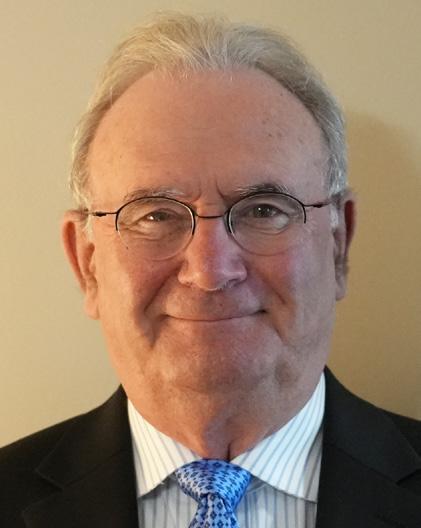
He is the Senior Vice President & Chief Scientific Officer, Internal Medicine at Pfizer. He earned a PhD and a MD from Brown University, served his residency at Barnes Hospital at Washington University in St. Louis before his postdoctoral training at the University of California, San Francisco, and Sloan-Kettering Institute in New York. Dr. Birnbaum has held faculty positions at Harvard Medical School, the Perelman School of Medicine at the University of Pennsylvania, and the Howard Hughes Medical Institute.
Dr. Blair obtained his PhD under the mentorship of Nobel Laureate Sir Derek Barton, from Imperial College, London, UK. He is an expert on the quantification and structural elucidation of proteins, DNA-adducts, protein-adducts, steroids, and drug metabolites. He has published 441 papers that have been cited over 28,000 times. Dr. Blair has been a member of numerous editorial boards. He regularly serves on NIH study sections, most recently as a charter member of Drug Discovery and Molecular Pharmacology (2010-2014; chair 2012-2014) and Cancer Biomarkers (2017-2021). In 2005, Dr. Blair was elected Fellow of the AAAS for “distinguished contributions to pharmaceutical medicine and autacoid biology.” He received the 2011 Eastern Analytical Award for Outstanding Achievements in Mass Spectrometry in 2011 and the Founder’s award from the American Chemical Society for his contributions to drug metabolism and mechanistic toxicology. Dr. Blair has been a member of ASPET since 1986.
The Pharmacologist • March 2023 18
Robert R. Ruffolo Career Achievement Award in Pharmacology

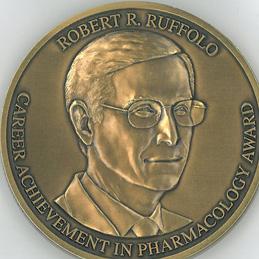
The Ruffolo Award was established in 2011 in recognition of the contributions made to drug discovery and development by Dr. Robert R. Ruffolo. The award recognizes the scientific achievements of scientists who are at the height of their careers and who have made significant contributions to pharmacology.
David R. Sibley, PhD, FASPET National Institute of Neurological Disorders and Stroke, National Institutes of Health

Dr. Sibley is receiving this award in recognition of his seminal contributions to understanding G protein-coupled receptors, especially the pharmacology, signaling and regulation of dopamine receptors.
Dr. Sibley received his bachelor’s degree in biology from San Diego State University and his PhD in pharmacology from the University of California, San Diego. He completed postdoctoral training at Duke University and moved to the National Institute of Neurological Disorders and Stroke at NIH where he is Senior Investigator and
Chief of the Section on Molecular Neuropharmacology. Dr. Sibley has made seminal contributions to G protein-coupled receptor biology particularly in the field of dopamine receptor pharmacology, signaling, and regulation that have engendered advances in neuropsychiatric drug discovery. His current research applies novel pharmacological concepts, including allosteric modulation and biased signaling, to identify unique dopamine receptor modulators that exhibit greater subtype and/or signaling pathway selectivity. These efforts have led to the discovery of allosteric ligands, biased agonists, and highly selective agonists and antagonists for probing dopaminergic function and as drug leads for the treatment of neurological and psychiatric disorders associated with aberrant dopaminergic signaling. Dr. Sibley has been a member of ASPET since 1985 and was designated a Fellow of ASPET in 2020.
Reynold Spector Award in Clinical Pharmacology
The Reynold Spector Award in Clinical Pharmacology was established in 2014 by ASPET in recognition of Dr. Spector’s dedication and contributions to clinical pharmacology. The award recognizes excellence in research and/or teaching in clinical pharmacology. This award is made possible by an endowment to ASPET from Dr. Reynold and Mrs. Michiko Spector.
Kathleen M. Giacomini, PhD University of California, San Francisco
Dr. Giacomini is receiving this award in recognition of her pioneering work on membrane transporters and her exceptional leadership in the field of clinical pharmacology.
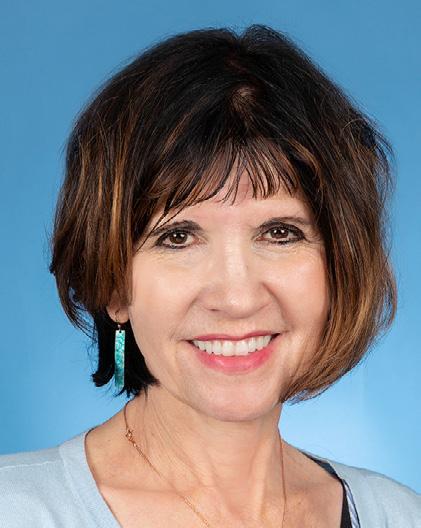
Dr. Giacomini, dean and professor in the School of Pharmacy at the University of California, San Francisco, is a leader in the field of membrane transporters with a focus on genetic polymorphisms. Her contributions include cloning, characterizing and discovering the endogenous role of the human transporters, OCT1 (SLC22A1)
and CNT2 (SLC28A2). She and her team published functional genomic studies of missense variants in over 15 transporters in the Solute Carrier Superfamily (SLC). Recently, they de-orphaned SLC22A15 and SLC22A24, discovering that the transporters have unique ligand specificities and important biological and pharmacological roles. With others, she co-founded the International Transporter Consortium, which has published impactful manuscripts informing clinical pharmacology and regulatory policy. She is the CoPrincipal Investigator of the UCSF-Stanford Center of Excellence in Regulatory Sciences and Innovation and Past President of the Pharmacogenomics Research Network. She has received numerous awards and is an elected member of the National Academy of Medicine. Dr. Giacomini has been a member of ASPET since 1988.
19 The Pharmacologist • March 2023
Dr. Giacomini will present a lecture on her work, titled “Unlocking the Biological and Pharmacological Roles of
Drug Transporters” as part of the new online VIP Award Lecture Series in conjunction with the annual meeting.

E. Leong Way Emeritus Travel Award

The E. Leong Way Emeritus Travel Award provides financial support to defray the expenses for an ASPET emeritus member to attend the ASPET Annual Meeting at EB. The award honors Edward Leong Way (1916-2017), a former president of ASPET remembered for his contributions to drug metabolism research, opioid pharmacology, and a western understanding of Chinese traditional medicine, as well as the numerous scientists he mentored over 75 years of his professional life.
John Y. Chiang, PhD Northeast Ohio Medical University
Dr. Chiang is receiving this award in recognition of his outstanding research on bile acid metabolism and his contributions to understanding liver disease and diabetes.
Professor Chiang received his PhD in 1976, in biochemistry, from the State University of New York at Albany and postdoctoral training (1976-78) at the Department of Biological Chemistry, University of Michigan Medical School in Ann Arbor. In 1978, he joined the faculty at what is now the Northeast Ohio
Medical University, where he retired as a professor of biochemistry and molecular pathology in 2022 and has been named professor emeritus. Professor Chiang studied bile acid metabolism and signaling in liver metabolic diseases and therapy. He has published 190 papers in this and related areas, significantly contributing to our understanding of the function and regulation of the cholesterol 7α-hydroxylase (CYP7A1), and the roles of bile acid-activated nuclear receptor FXR and G-protein coupled receptor TGR5 signaling in the pathogenesis of alcoholic and nonalcoholic fatty liver disease, diabetes and obesity. He was the recipient of a MERIT award from NIDDK that recognized his long-term contribution and creativity. Dr. Chiang has been a member of ASPET since 1995.
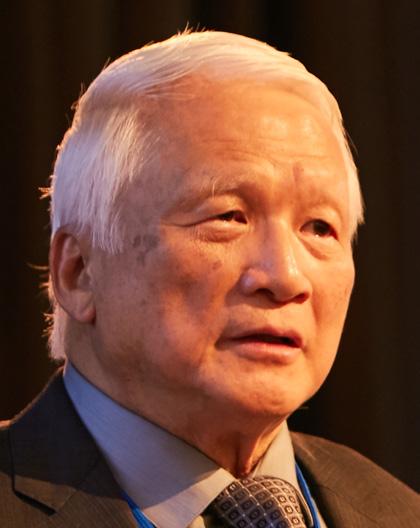
The Pharmacologist • March 2023 20

From Botulism to Botox
Rebecca J. Anderson, PhD
On December 14, 1895, a group of Belgian musicians in the village of Ellezelles performed at the funeral of 87-year-old Antoine Creteur (1-3). Afterwards, as was the custom, the mourners and musicians gathered for a meal at Le Rustic, a local inn (2, 3). Within a few days, 34 people in the group developed symptoms of botulism, and three of the musicians died. Ten others nearly died (2, 3). Some of those survivors experienced visual problems for 6-8 months (2)
Poisoned Sausages
Humans have probably known about food poisoning as long as they have tried to preserve and store food. Although there are scanty descriptions in the ancient
literature, long-standing dietary laws and taboos attest to concerns about eating certain foods (3, 5).
The first documented cluster of food poisoning cases occurred at the end of the 18th century in the German Kingdom of Württemberg (now the German Federal State of Baden-Württemberg) (4, 6, 7).

The Napoleonic Wars had caused widespread poverty, resulting in a decline in hygienic standards for rural food production (3-6). Some people were stricken with an odd pattern of symptoms including blurry vision, drooping eyelids, slurred speech, difficulty swallowing, and severe muscle weakness (6). The symptoms were linked to the consumption of meat, especially a favorite rural dish called Saumagen, which was pork stomach stuffed with blood sausage (3)
After a spike in food poisoning fatalities, government officials in the state capital of Stuttgart took action. In July 1802, they issued a warning to the public on the “harmful consumption of smoked blood sausage” (4-6)
Health officials attributed the Württemberg sausage deaths to contamination with prussic acid (i.e., hydrogen cyanide) (3, 4, 6). But they also asked the medical faculty at the nearby University of Tübingen for their opinion. The professors disputed the prussic acid theory and suspected the poison was organic.
Johann Heinrich Ferdinand Autenrieth, possibly the most influential Tübingen medical professor, was especially intrigued and probed deeper. He studied the medical records sent by the health officers and attending physicians, who had made detailed observations of their poisoned patients. Autenrieth then compiled and issued a list of “sausage poisoning” symptoms (gastrointestinal problems, double vision, and dilated pupils) and concluded that the sausages had not been boiled long enough (3, 4).
In 1815, Autenrieth received seven case reports from JG Steinbuch, a health officer in Herrenberg, Württemberg. All of the victims had eaten a meal of liver sausage and peas, and three of them died. Steinbuch also sent Autenrieth his autopsy results on the deceased victims (3, 4)
At the same time, Justinus Andreas Christian Kerner, a 29-year-old medical officer in Welzheim, Württemberg, also sent a case report of lethal food poisoning to Autenrieth, who had been his medical school professor at Tübingen. Autenrieith considered
The Pharmacologist • March 2023 22
https://www.cdc.gov/botulism/general.html
Clostridium botulinum
Steinbuch’s and Kerner’s reports to be accurate and important medical contributions. He published their observations in 1817 in the Tübinger Papers for Natural Sciences and Pharmacology (3, 4)

A Complete Description
Kerner continued documenting cases of “sausage poisoning” and published his initial findings in 1820. This monograph summarized the case histories of 76 patients and contained the first complete clinical description of what neurologists now recognize as botulism (3, 4)
Those symptoms included stomach cramps, diarrhea, vomiting, intestinal paralysis, dry mouth, reduced secretion of tears, sweat, nasal mucus, and ear wax, weakened muscles of the esophagus, stomach, and bladder, dilated pupils, blurry vision, droopy eyelids, double vision, paralysis of pharyngeal and respiratory muscles, and generalized weakness (3). Kerner also concluded that the brain was not affected, because the patients remained conscious.
Kerner then moved to Weinsberg, Württemberg, to take the post of medical officer, and he intensified his clinical research of “sausage poisoning.” Altogether, he documented 155 cases, including postmortem exams (3, 4).
Kerner’s Experiments
In 1821, Kerner received a small grant from the state government to continue his research (3, 4). He developed a method for extracting and isolating the unknown toxic substance from spoiled sausages. He then mixed this extract with honey and fed it to birds (4 ravens, 2 owls, 2 sparrows, 3 robins, 1 pigeon, and 1 titmouse), 12 cats, and 4 rabbits, as well as frogs, flies, locusts, and snails (3, 4, 6, 8). The animals exhibited the same adverse effects as he had seen in the patients suffering from “sausage poisoning” (6)
Kerner also recognized the poison’s clinical similarities to known neurological poisons, such as nicotine and snake venom. Like Autenrieth, he concluded that the “sausage poison” was probably of biological or animal origin (3, 6). So, he reviewed the various recipes and ingredients of the spoiled sausages, looking for the source of the toxin.
The only common ingredients were fat and salt. He discounted salt, a widely used preservative, and concluded that the toxin must have been produced in the fat (3, 4). He, therefore, referred to the toxin variously as “fatty poison” and “fatty acid,” as well as “sausage poison” (3, 5).
In other experiments, Kerner inserted his sausage extracts into small incisions in the thighs of rabbits and cats. The paralytic effect was restricted to the toxin-treated tissue, and the animals recovered (6). He concluded that “…the fatty acid, if applied to a wound, has only a very slow effect on the animal’s body, especially if the wounds are on the extremities” (7).
Kerner’s final experiment was testing the sausage extract on himself, despite the deaths of two of his colleagues who had previously attempted similar experiments (7). It tasted sour, much like the spoiled sausages (6). “A few drops of this acid placed onto the tongue cause…this feeling of contraction and choking in the area of the larynx” (7)
After taking a larger dose, he said, “a feeling of listlessness and tension in the eyelids results, the eyes go stupid, one feels a slight burning in the urea, dull pain in the stomach, constipation, and very dry palms and soles of the feet” (7). When Professor Autenrieth heard about these self-administration experiments, he urged Kerner to stop (3)
The Pharmacologist • March 2023 23
https://fr.wikipedia.org/wiki/Justinus_Kerner
Justinus Kerner
From his clinical and experimental observations, Kerner concluded that the toxin develops in bad sausages under anaerobic conditions, is a biological substance, is potent and lethal even in small doses, and acts selectively on the motor and autonomic nervous systems without affecting sensory transmission or the brain (3, 4, 6-8). Death was caused by extreme muscle weakness leading to respiratory and cardiac failure (3, 7). “The capacity of nerve conduction is interrupted by the toxin in the same way as in an electrical conductor by rust,” he said (4). Although pathogens and bacteria were unknown at that time, Kerner’s conclusions were remarkably insightful.
In 1822, Kerner published all of his clinical and animal results in a 368-page monograph. Based on his findings, he said, poisoning could be prevented by thoroughly boiling sausages, storing them under aerobic and dry conditions, and avoiding consumption of the “bad parts” (3, 4)
For those who were suffering from “sausage poisoning,” Kerner could only recommend symptomatic treatment. Among those treatments, he invented an elastic tube that permitted patients to receive adequate nutrition and avoid aspiration. This invention is considered the first documented application of a successful gastric tube (3, 4)
Wurst-Kerner
In the final chapter of his 1822 monograph, Kerner speculated that the toxin might reduce or block hyperactivity and hyperexcitability states of the motor and autonomic nervous systems (3, 4, 7, 8). Small doses could actually be therapeutic.
He favored using the toxin to treat St. Vitus’s dance (Sydenham chorea) and to reduce excessive sweating
and mucus (3, 4, 7). He also suggested more diverse therapeutic applications, such as treating infections, ulcers from malignant diseases, burns, tumors, viper bites, delusions, rabies, plague, consumption (tuberculosis), and yellow fever (4, 5). Kerner freely admitted that all of these applications were merely suggestions and needed to be confirmed or disproved by experimental studies (3, 4).
As a result of his publications, Kerner was widely acclaimed as an expert on “sausage poisoning” and was commonly referred to as “Wurst-Kerner” (“sausage Kerner”). “Sausage poisoning” was sometimes called “Kerner’s disease” (3, 4, 6).
In 1869, H. Müller, a German physician, coined the term “botulism” to refer to the sausage poisoning syndrome. Müller derived the word from the Latin botulus, meaning sausage (4, 5, 7).
The Belgian Connection
In 1895, the Ellezelles coroner attributed the deaths of the three Belgian musicians to food poisoning. Their symptoms included dilated pupils, double vision, difficulty swallowing and breathing, inarticulate speech, dry mucous membranes, urine retention, constipation, and severe muscle weakness (2, 3). The illness was traced to a spoiled ham eaten at a post-funeral meal at Le Rustic (2).
The Ellezelles public prosecutor ordered a chemical analysis of the ham, and two of the victims were autopsied (2, 3). He also asked Professor Emile Pierre-Marie van Ermengem in Ghent to investigate. Van Ermengem was given the test results, along with samples of the spoiled ham and organs collected from the autopsies (1, 2).
Unlike Kerner, Autenrieth, and the other physicians who had reported cases of “sausage poisoning” in earlier years, Van Ermengem had a tremendous advantage. He had received his medical degree from the Catholic University of Leuven, Belgium, in 1875 and continued his clinical training in London, Edinburgh, and Vienna. In 1883, worked in the laboratories of Robert Koch (a pioneering microbe hunter) in Berlin. In 1888, Van Ermengem was appointed Professor of Microbiology at the University of Ghent (2)
Van Ermengem first reviewed the attending physicians’ clinical observations and autopsy reports. He found a clear correlation between the amount of spoiled ham consumed by the 34 victims (including the 3 who died)
The Pharmacologist • March 2023 24
"Although pathogens and bacteria were unknown at that time, Kerner’s conclusions were remarkably insightful."
Emile Pierre-Marie van Ermengem

and the severity of the symptoms (2). In the histological sections of the spleen of one victim, Van Ermengem saw numerous anaerobic bacteria (2, 3)
He also saw considerable invasion of anaerobic bacteria in the spoiled ham (2, 3). After studying the process that had been used to prepare the Le Rustic ham, Van Ermengem concluded that it had been improperly cured (2).
Next, Van Ermengem injected tiny bits of contaminated ham subcutaneously into cats, pigeons, monkeys, guinea pigs, rabbits, and mice. The animals exhibited symptoms similar to the Ellezelles victims. Oral administration to monkeys, guinea pigs, and mice produced the same symptoms. In the rabbit, the lethal dose by subcutaneous injection was extremely low: only 0.0005 mg (2).
The anaerobic bacterium that Van Ermengem isolated from the ham and the organs of the Ellezelles victims had numerous villi. When grown in tissue culture, its spores produced a gas with a rancid odor (2, 5).
From his analysis, which he published in 1876, Van Ermengem concluded that the bacterium itself caused little harm. Rather, he confirmed Kerner’s deduction that the agent responsible for the clinical syndrome was a toxin, produced by the bacteria under anaerobic conditions (5, 7)
Van Ermengem named the bacterium Bacillus botulinus, because the clinical symptoms were similar to the “sausage poison” syndrome long known in southern Germany. The toxin is now called botulinum toxin, and as little as 0.1 microgram can be fatal to humans (2).
In 1917, the nomenclature committee of the Society of American Bacteriologists redefined two distinct genus groups of bacteria: Bacillus and Clostridium. Aerobic microorganisms were assigned to Bacillus, and anaerobic, rod-shaped, spore-forming bacteria were assigned to Clostridium. So, Van Ermengem’s tadpole-shaped Bacillus botulinus became Clostridium botulinum (5).
Grouping the Toxins
For a long time, based on Kerner’s and Van Ermengem’s results, health officials thought that only poorly stored meat and fish caused botulism. Examples included ham in barrels of brine in France, poorly dried and stored herring in the Baltic, fermented trout packed in willow baskets in Scandinavia, and liver sausages swinging from the rafters of Austrian huts (3, 5).
That view changed in 1904. In Darmstadt, Germany, 21 people ate canned white beans, and 11 of them died from botulism. Investigators isolated bacteria from the canned beans and compared it with the bacteria from the Ellezelles ham. It was, indeed, a case of botulinum toxicity. But interestingly, they found that the C. botulinum strains were different, and the two botulinum toxins were serologically distinct (3, 5).
In 1919, Georgina Burke at Stanford University examined 12 strains of C. botulinum, including 5 outbreaks of botulism from home-canned fruits and vegetables (5, 9). Based on her laboratory assay, which measured toxin-antitoxin reactions, Burke identified two biologically distinct botulinum toxins. She designated them Type A and Type B (9).
Microbiologists now recognize seven distinct antigenic types of botulinum toxin: A through G. Of those, botulinum toxin Types A, B, E, and F are responsible for human cases of botulism (5). Type A is by far the most potent and prevalent (7). It is 100 times more toxic than cyanide (10)
Achieving Purity
In 1928, P. Tessmer Snipe and H. Sommer at the University of California San Francisco first isolated
The Pharmacologist • March 2023 25 https://en.wikipedia.org/wiki/%C3%89mile_van_Ermengem
botulinum toxin as a stable acid precipitate (11). During World War II, military authorities became interested in the isolated botulinum toxin because of its extremely high potency (10).
Edward Schantz, while serving in the US Army, helped produce and evaluate the toxin’s potential as a biological weapon (12, 13). But Schantz’s research team at Fort Detrick, MD, concluded that botulinum toxin had only limited battlefield applications (10, 12)
In 1946, Schantz, now an Army reserve officer, became head of the chemistry branch at Fort Detrick’s Biological Research Center (12, 13). Along with Carl Lamanna and others, Schantz developed methods for crystallizing pure botulinum toxin Type A (5, 13, 14). They also determined its chemical structure and developed a process for standardizing and stabilizing it (7, 13).
Schantz generously supplied his purified toxin to basic researchers and clinical investigators. He also provided advice on how to handle it, including his assay method, which was widely adopted (13).
The innovative studies of those researchers led to a better understanding of the toxin’s pharmacological actions (7). Using systemic administration as well as injecting individual muscles, academic researchers determined the toxin’s selectivity for various types of muscle, its duration of action, and its systemic potency.
In 1949, British physician and pharmacologist Sir Arnold Burgen and his colleagues at Middlesex Hospital Medical School in London conducted a comprehensive and convincing series of experiments using the isolated rat phrenic nerve-diaphragm preparation (15). They used the Type A toxin for most of their studies, because it was much more potent than Type B. Burgen definitively showed that botulinum toxin’s mechanism of action was blocking the release of acetylcholine from nerve terminals (15)
This discovery inspired other laboratory researchers to further characterize the toxin’s actions. Botulinum toxin does not cause nerve terminal degeneration, but the toxin-induced blockade of acetylcholine release is irreversible (16). Neurotransmission is restored by sprouting nerve terminals and the formation of new synaptic contacts, which usually takes 2-3 months (2, 16)
From Poison to Drug
In parallel with the laboratory studies, clinicians pursued therapeutic applications. Ophthalmologists had long been interested in non-surgical manipulation of ocular muscles to realign the eyes of patients with strabismus (cross-eyed). One of the first investigators was Conrad Berens, who injected alcohol into the eye muscles. Unfortunately, the effect either was inadequate or, occasionally, caused permanent paralysis. Other ophthalmologists tried to correct strabismus with a variety of drugs including local anesthetics but without much success (5, 17).
In the late 1960s, Alan Scott, an ophthalmologist in San Francisco, experimented with several substances on monkeys in which he had induced strabismus via a surgical procedure (1, 5). Although these early experiments were unsuccessful in correcting strabismus, Scott mastered a technique for drug injection into specific extraocular muscles using a custom-designed needle and developed criteria for evaluating the effects (5).


The Pharmacologist • March 2023 26
https://www.md.com/doctor/alan-b-scott-md
Alan Scott, MD
https://www.researchgate.net/figure/Edward-J-Schantz-1908-2005_fig3_6371668
Edward Schantz
Then, Alfred Maumenee, a California colleague who had worked with Schantz at Fort Detrick, suggested that Scott might try botulinum toxin (5). Using Schantz’s highly purified botulinum toxin Type A, Scott conducted the first of his now-classic experiments.
In his experimental monkey model, botulinum toxin produced localized paralysis of the targeted eye muscles for a reasonable period of time and without side effects (10). Scott published the monkey results in 1973 (17).
In 1972, Edward Schantz retired from Fort Detrick and became a biochemist in the Food Research Institute at the University of Wisconsin (13). He continued his studies of neurotoxins and also continued to supply his purified botulinum toxin Type A to other researchers, including Scott (12, 17)
Oculinum
In 1977, the Food and Drug Administration (FDA) permitted Scott to begin clinical trials (10, 17). Drug companies were not interested in his ophthalmology treatment, which they considered an orphan indication. Scott took out a mortgage and asked for small donations from doctors, who then assisted with the trials (18). Scott renamed the toxin Oculinum (undoubtedly to conceal “botulinum toxin” from his patients) and formed a company, Oculinum, Inc., in Berkeley, CA, to distribute it (5, 16, 19).
In 1978, Scott injected his first patient with botulinum toxin (18). The patient had undergone three failed operations for double vision (10). One of his eyes pulled to the side. When Scott first injected botulinum toxin into the patient, he later told Scientific American, “I don’t know if he was more nervous or I was more nervous” (10)
Altogether, Scott injected 132 doses of botulinum toxin Type A into 42 patients with strabismus, and it was “uniformly beneficial” (17). Oculinum was effective and could be re-injected without allergy or loss of potency.
The effect lasted between 2 weeks and 8 months (depending on the dose), left the muscle normal after the toxin’s effects wore off, and induced no systemic effects. The only local complication was weakening
of adjacent eye muscles. Scott published his clinical results in 1980 (17).
In December 1989, Scott received approval from the FDA for Oculinum (botulinum toxin Type A) to treat strabismus, blepharospasm, and hemifacial spasm (1, 5, 16, 18). Blepharospasm is a neurological condition in which the eyelids are involuntarily forced shut. Hemifacial spasm is involuntary contraction of facial muscles on one side of the face.
Until the FDA approved botulinum toxin, the options for patients with blepharospasm were either medication, which doesn’t always work, or surgery (10). Most experts now consider botulinum toxin the first line of treatment for both blepharospasm and hemifacial spasm (1)
Clinicians from around the world visited Scott to learn how to selectively inject the targeted eye muscles using his special needle apparatus. When they left, he gave them samples of Oculinum (5).
Enter: Botox
Although the drug was eagerly embraced by ophthalmologists, Scott had no desire to become a pharmaceutical manufacturer (10, 18). In 1991, he sold his Oculinum rights to Allergan in Irvine, CA, for $9 million (5, 19, 20).
Allergan had primarily been an eye care company with products like contact lens cleaners and prescription solutions for dry eyes (19). Sales of those products generated revenues of about $500 million annually. The company saw Scott’s drug as a niche product to treat strabismus, which affects about 4% of the US population. By the end of 1991, Allergan had collected about $13 million in botulinum toxin sales (19).
In 1992, Allergan rebranded the drug as Botox (5, 18, 20). Schantz’s lab in Wisconsin continued to produce and purify all the botulinum toxin Type A that was used commercially in the United States through 1998 (13).
Going off Script
Once Botox was approved by the FDA, doctors could legally prescribe it for any medical condition that they
The Pharmacologist • March 2023 27
"When Scott injected his first patient, he said, 'I don’t know if he was more nervous or I was more nervous.'"
thought could benefit from it. And prescribe it, they did. The obvious targets were localized muscles and glands, where overactive cholinergic transmission caused unwanted muscle contractions and secretions, respectively.
Although drug companies cannot advertise a drug for unapproved indications, they are often the first to hear about off-label uses (19). Doctors share their experiences with sales representatives, who in turn pass along the news to the company’s researchers.
Allergan followed up on the reports from doctors and conducted clinical trials for some of these additional indications (20). Over the years, FDA approved Botox for excessive underarm sweating, cervical dystonia, overactive bladder, and upper limb spasticity (1, 19, 20). Botox is now a treatment of choice for limb spasticity resulting from stroke, multiple sclerosis, spinal cord trauma, and cerebral palsy (5).
As doctors became more comfortable handling botulinum toxin, they continued to experiment, injecting it into muscles and glands all over the body (20). And Allergan (now AbbVie) continues to sponsor clinical trials. More than 200 ongoing clinical trials with botulinum toxin are listed in clinicaltrials.gov.
These experimental therapeutic uses include treatment of chewing problems, swallowing problems, pelvic muscle spasms, drooling, anal fissures, phantom limb pain, and atrial fibrillation after heart surgery (20) The more exotic uses include treatments for premature ejaculation, hair loss, and cold hands (19).
AbbVie owns or has applied for patents on more than 90 Botox indications. These include sinus headache, fibromyalgia, pain, ulcers, inner ear disorders, uterine problems, and buttock deformity (20). Although some of these novel indications may be overly ambitious,
botulinum toxin has, in fact, become an essential treatment for many conditions that are otherwise difficult to treat medically or surgically (2).
Sharing Anecdotes
It wasn’t long before Scott and other ophthalmologists began receiving anecdotal reports from their patients, who said their facial wrinkles had faded after receiving botulinum toxin injections for blepharospasm or hemifacial spasm (5, 20). Although Scott continued research on innovative ophthalmology treatments for the rest of his life, he wasn’t interested in pursuing cosmetic indications, saying, “I think that’s a charming, slightly frivolous use” (10, 18). But other physicians did follow up.
In 1989, plastic surgeons Richard Clark and Craig Berris at the University of California Davis treated a 52-year-old woman (5). She had undergone two face lifts and surgery to eliminate crow’s feet.
Unfortunately, the surgery caused one-sided facial muscle paralysis. Clark and Berris injected botulinum toxin Type A into the functioning facial muscle on the opposite side. The procedure relieved the unilateral forehead wrinkles and brow elevation and restored the symmetry of her face (5)
Following this, many reports regarding cosmetic uses of Botox were published by other clinical investigators, including Jean and Alastair Carruthers in Vancouver, Canada (21).
Alastair’s dermatology practice encompassed cosmetic procedures and surgery for skin cancer (21). He shared an office with his wife, Jean, an ophthalmologist who treated pediatric disorders, as well as adult conditions like blepharospasm. The blepharospasm procedure

The Pharmacologist • March 2023 28
https://www.asds.net/skin-experts/news-room/press-releases/ asds-announces-inaugural-recipient-of-drs-alastair-and-jean-d- carruthers-research-award
Jean and Alistair Carruthers
"As doctors became more comfortable handling botulinum toxin, they continued to experiment, injecting it into muscles and glands all over the body."
involved injecting Botox into the skin around the eyes, to temporarily paralyze the spasmodic eyelid muscles.
One day, a patient became irate because Jean was not injecting her forehead. The patient’s forehead was not spasmodic and required no treatment, but she insisted, “When you inject my forehead, my wrinkles go away” (21)
At dinner, Jean mentioned the incident to Alastair. Coincidently, some of his dermatology patients had been frustrated by his failed attempts to erase the vertical frown lines between their eyebrows (21) The injected fillers available at that time were short-lived and could be painful. The next day, the Carruthers’ receptionist volunteered to be their first test subject. When Alistair saw the cosmetic results after Botox injection, he was immediately convinced (21)
The Carruthers began conducting clinical trials, which now have resulted in more than 100 papers in peerreviewed dermatology journals. They also presented their findings at dermatology conferences. Initially, their colleagues were skeptical, but patient satisfaction drove demand.
Jean qualified as a cosmetic surgeon, and the couple altered their practice to concentrate on cosmetic medicine. Through their practice and extensive research, they have sought to make cosmetic medicine “academically respectable” (21).
Commercializing Anecdotes
Not surprisingly, Allergan was also receiving anecdotal reports from physicians about the cosmetic effects of Botox (20). In 1998, the incoming CEO, David E. I. Pyott, pushed the company to begin clinical trials and explore Botox’s wrinkle-reducing potential (19, 20). Allergan conducted a series of randomized, double-blind, placebo-controlled trials in thousands of patients. Botox was effective in reducing or eliminating crow’s feet, wrinkles between the eyebrows, and forehead lines. In 2002, Botox Cosmetic received FDA approval (5). It was the first time a therapeutic drug was granted approval for a strictly cosmetic purpose (19)
Originally, Botox Cosmetic injections targeted the upper third of the face. But now, it is used to correct lines, creases, and wrinkles all over the face, chin, neck, and chest (16). Botox is North America’s No. 1 cosmetic procedure (21).
Similar to the discovery of Botox’s cosmetic efficacy, patient feedback triggered another unanticipated indication. A plastic surgeon in Beverly Hills, CA, was getting reports from his patients who said they experienced fewer migraines after their Botox injections for wrinkles (19). He passed the anecdote to Allergan researchers, who must have been somewhat skeptical.
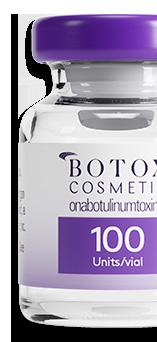
The Pharmacologist • March 2023 29
https://hcp.botoxcosmetic.com/product-information
"Botox was the first time a therapeutic drug was granted approval for a strictly cosmetic purpose. Off-label prescribing, although legal, raises questions about the risks of using a drug in ways that have not been fully vetted."
But they followed up with two randomized, placebocontrolled, double-blind clinical trials. The results confirmed the anecdotal reports and demonstrated that Botox induced statistically significant and clinically meaningful relief from migraines.
Unlike most of the other applications of botulinum toxin, which logically result from inhibition of acetylcholine release, the mechanism of action of the anti-migraine effect remains unclear (7, 19). Nevertheless, FDA approved Botox for chronic migraines in 2010 (7). The migraine treatment consists of injecting Botox into seven specific head and neck muscle areas.
The Downside
For therapeutic and cosmetic use, physicians inject only a tiny amount of a dilute botulinum toxin solution into the target tissue, and most experts consider it safe (19). The controlled local pharmacological effect (that is, muscle paralysis or glandular secretion inhibition) typically lasts 3-6 months.
Botulinum toxin injections are generally well tolerated, and side effects are few, mild, and transient. There may be mild injection pain and local edema, redness, transient numbness, or headache. If nearby muscles are unintentionally weakened/paralyzed, they usually recover in weeks to a few months, depending on the site, dosage strength, and type of muscle (16).
Life-threatening complications of Botox are rare (16, 20). But if the toxin spreads from the injection site and enters the bloodstream, other parts of the body will be affected. This can cause serious swallowing and breathing problems. Larger intravenous injections of the toxin, of course, mimic the symptoms of botulism.
Off-label prescribing, though legal, raises questions about the risks of using a drug in ways that have not been fully vetted. Some critics worry that doctors are adopting novel uses of Botox without regulatory oversight or rigorous clinical trials to establish safety and efficacy for those indications. “It’s trial and error with a nerve poison” (20)
The adverse reports accumulated, and in 2009, the FDA required Allergan to add a black-box warning to Botox’s label, cautioning about the drug’s side effects (19). The reported adverse effects included muscle weakness, double vision, drooping eyelids, difficulty swallowing, urinary incontinence, and breathing difficulties. Most cases of serious side effects involved off-label uses, injecting excessive amounts of the toxin, and/or treating spasticity in children (19).
“Wonderful Medical Results”
In addition to Botox, there are now four other commercially available botulinum toxin Type A products (Dysport, Xeomin, Jeuveau, and Daxxify), and one botulinum toxin Type B product (Myobloc). But Botox holds the largest market share by far. In 2021, AbbVie reported $4.7 billion in net Botox revenues, with slightly more revenues from Botox Therapeutic than Botox Cosmetic.
Botox is used by almost every sub-specialty of medicine (16). And because physicians continue experimenting with an ever-expanding list of off-label indications, it is likely that the market for therapeutic uses of Botox will continue to grow. The New York Times calls it “medicine’s answer to duct tape” (20).
Alan Scott never regretted selling his rights to Botox. “I had my house paid for, my kids were educated, and I had the satisfaction of seeing absolutely wonderful medical results” (18).
The Pharmacologist • March 2023 30
"Although some potential indications may be overly ambitious, botulinum toxin has, in fact, become an essential treatment for many conditions that are otherwise difficult to treat."
References:
1. Jabbari B (2016) History of botulinum toxin treatment in movement disorders. Tremor Other Hyperkinet Mov (NY) 6:394: doi 10.7916/D81836S1; available from: https://tremorjournal.org/article/10.5334/tohm.321/.
2. Devriese PP (1999) On the discovery of Clostridium botulinum. J Hist Neurosci 8(1): 43-50.
3. Erbguth FJ (2004) Historical notes on botulism, Clostridium botulinum, botulinum toxin, and the idea of the therapeutic use of the toxin. Mov Disord 19 (Suppl 8): S2-S6.
4. Erbguth FJ (1999) Historical aspects of botulinum toxin: Justinus Kerner (17861862) and the “sausage poison.” Neurology 53(8): 1850-1853.
5. Monheit GD and Pickett A (2017) AbobotulinumtoxinA: a 25-year history. AesthetSurg J 37(S1): S4-S11.
6. Kreston R (July 31, 2016) The bad sausage & the discovery of botulism. Discover Magazine; available from: https://www.discovermagazine.com/health/the-badsausage-and-the-discovery-of-botulism
7. Pellett S (2012) Learning from the past: historical aspects of bacterial toxins as pharmaceuticals. Curr Opin Microbiol 15: 292-299.
8. Ali FR and Al-Niaimi F (2016) Justinus Kerner and sausage poisoning: the birth of botulinum toxin. Intl J Dermatol 55(11): 1295-1296.
9. Burke G (1919) Notes on Bacillus botulinus. J Bacteriol 4(5): 555-570.
10. McCutcheon C (November 3, 2016) The creator of Botox never cared about wrinkles. Sci Am; available from: https://blogs.scientificamerican.com/guest-blog/ the-creator-of-botox-never-cared-about-wrinkles/
11. Snipe PT and Sommer H (1928) Studies on botulinus toxin: 3. Acid precipitation of botulinus toxin. J Infect Dis 43(2): 152-160.
12. Pearce J (May 4, 2005) Edward J. Schantz, pioneering researcher of toxins, including Botox, dies at 96, New York Times; available from: https://www. nytimes.com/2005/05/04/us/edward-j-schantz-pioneering-researcher-of-toxinsincluding-botox-dies-at.html
13. University of Wisconsin (May 5, 2005) UW-Madison biochemist Edward Schantz dead at 96. UW CALS News; available from: https://news.cals.wisc. edu/2005/05/05/uw-madison-biochemist-edward-schantz-dead-at-96/
14. Lamanna C, McElroy OE, and Eklund HW (1946) The purification and crystallization of Clostridium botulinum type A toxin. Science 103(2681): 613-614.
15. Burgen ASV, Dickens F, and Zatman LJ (1949) The action of botulinum toxin on the neuro-muscular junction. J Physiol 109: 10-24.
16. Nigam PK and Nigam A (2010) Botulinum toxin. Indian J Dermatol 55(1): 8-14.
17. Scott AB (1981) Botulinum toxin injection of eye muscles to correct strabismus. Trans Am Ophthalmol Sci 79: 734-770.
18. Green P (January 12, 2022) Alan Scott, doctor behind the medical use of Botox, dies at 89. New York Times; available from: https://www.nytimes. com/2022/01/12/health/alan-scott-dead.html
19. Sifferlin A (January 5, 2017) Botox: the drug that’s treating everything. Time 189(3); available from: https://time.com/4623409/botox-drug-treating-everything/
20. Singer N (April 11, 2009) So Botox isn’t just skin deep. New York Times; available from: https://www.nytimes.com/2009/04/12/business/12botox.html
21. Asenburg K (October 4, 2018) The real history behind the birth of Botox. Readers Digest; available from: https://www.readersdigest.ca/health/beauty/birth-botox/.
Biosketch:
Rebecca J. Anderson holds a bachelor’s in chemistry from Coe College and earned her doctorate in pharmacology from Georgetown University. She has 25 years of experience in pharmaceutical research and development and now works as a technical writer. Her most recent book is Nevirapine and the Quest to End Pediatric AIDS. Email rebeccanderson@msn.com
In the next issue of The Pharmacologist…
Dr. Anderson will feature the story of Herceptin.
Don't miss the June 2023 issue.

The Pharmacologist • March 2023 31
Science Policy News



Meet the 2023 ASPET Washington Fellows

ASPET is proud to announce the selection of ten awardees to participate in the 2023 Washington Fellows program. The mission of the Washington Fellows program is to enable developing and early career scientists interested in science policy to learn about and become more engaged in public policy issues. Get to know this year’s class.
Rehab Alharbi
Howard University
Rehab was born and raised in Riyadh, Saudi Arabia. She received her bachelor’s degree in pharmacy from King Saud University. Then she worked as a pharmacist at the Ministry of Health. Following her undergraduate education, she studied for her master’s degree in Pharmaceutical Science at King Saud University. Upon graduation, she was privileged to work at the Drug and Poison Information Center, which presented new opportunities and challenges. It provides a scientific reference for the health staff in the hospital and the region and offers evidence-based medical advice to deal with poisoning cases and pharmaceutical inquiries. It also develops workplace policies and improves guidelines for patient safety. She enjoyed working on regulations and policies until she was promoted to the Quality Department, where she worked for a year as a quality coordinator and then as the supervisor of the Quality and Patient Safety Department. She worked collaboratively with senior leadership, physicians, nurses and pharmacists to develop and implement quality and patient safety standards to ensure regulatory compliance and accreditation. She is currently pursuing her PhD in health outcomes research in the department of Pharmacy Administration at Howard University. Under the mentorship of Dr. Marry Maneno, her research is

focused on medication-related health services and pharmacoepidemiology in the areas of medication safety, medication use in specific populations and medication adherence. As an ASPET Washington Fellow, Rehab hopes to leverage her pharmacist and research experience to develop safer and more effective drug regulations.
Stanley Cheatham
Virginia Commonwealth University
Stanley was born and raised in Richmond, Va. He graduated from Virginia Commonwealth University with a bachelor’s degree in biology. During his undergraduate career he cofounded a student organization that sought to increase minority participation in medicine. While at Virginia Commonwealth University he was a participant in LEAD, a livinglearning community that taught the fundamentals of leadership. As a capstone project for LEAD, he received the IMSD fellowship where he was finally able to explore his fascination for drugs of abuse and their intersection with the microbiome. Upon graduating he then spent a year as a PREP scholar at Virginia Commonwealth University. He is now a 3rd year PhD candidate in pharmacology and toxicology at Virginia Commonwealth University under the tutelage of Dr. Hamid I. Akbarali. As a PhD student he was appointed to a NIH T32 fellowship. His research is now focused on the role of cholinergic input during chemotherapy
The Pharmacologist • March 2023 32
induced diarrhea. As an ASPET Washington Fellow, Stanley hopes to use the skills and training he will receive to be an advocate for minority participation in STEM. He hopes to bridge the divide between science and politics.
Cuauhtemoc Ulises Gonzalez
University of Texas MD Anderson Cancer Center at the UTHealth Houston
Ulises was born in Cerritos, San Luis Potosi, Mexico and immigrated to Lavergne, Tenn. where he was raised since the age of seven. As a firstgeneration college student, he received his bachelor’s degree in biochemistry from Middle Tennessee State University (MTSU). While at MTSU, he was involved in bioorganic research where he used vibrational spectroscopy to study protein conformations and in psychology research where he investigated cultural differences in flashbulb memory. Through these experiences, Ulises found his passion for neuroscience and went on to pursue his masters at the University of Texas at Dallas (UTD). At UTD, he worked on investigating the role of NMDA subtype receptors in strong fearful memories to understand methods in attenuating maladaptive memories. Currently, Ulises is pursuing his PhD under the mentorship of Dr. Vasanthi Jayaraman at the University of Texas MD Anderson Cancer Center at the UTHealth Houston Graduate School of Biomedical Sciences. His research examines the structural and functional properties of ionotropic glutamate receptors. Specifically, he is investigating how trans-synaptic interactions between neurexins and glutamate receptors modulate the gating properties of these channels which ultimately affect neuronal firing and behavior. Ulises has enjoyed volunteering as a reading tutor to immigrant children and as a soccer coach to underserved youth at the YMCA. As an APSET Washington Fellow, Ulises hopes to learn how he can be involved in the policy making process as a scientist to help underserved communities obtain affordable healthcare and medication. He also hopes to promote STEM education in these communities.
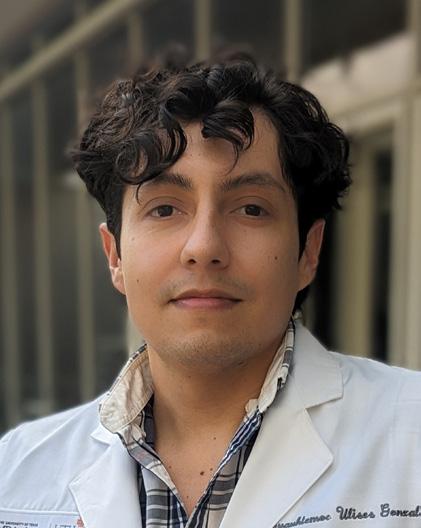
Chloe Kirk University of Miami
Chloe is originally from Saint Paul, Minn. She earned her bachelor’s degree in molecular biology and legal studies from the University of WisconsinMadison where she became interested in the intersection of science, law and policy. Outside of classes, she was able to explore different types of science research which led to her passion for cell biology. During her undergraduate education, Chloe also learned the importance of science outreach and communication. She helped organize an annual STEM immersion bootcamp at her university and ran events to provide resources to science majors through the university’s library. Chloe is currently pursuing her PhD in biochemistry and molecular biology at the University of Miami. Under the mentorship of Dr. Stephen Lee, her research focuses on the ways cells respond to stress, specifically how cells can disassemble physiological amyloids termed Amyloid-bodies. Beyond her research, Chloe has stayed involved with her science outreach and communication efforts in graduate school by co-founding her department’s student government, joining the university’s graduate student government (most recently as the Vice President), organizing science field trips with a local high school and becoming a research commercialization fellow to learn how to effectively market academic research. Outside of school, she started her own blog and social media sharing life as a PhD student, volunteers through Skype a Scientist to share her research with K-12 students across the country and contributes interviews and science articles for ASBMB and ASCB. As an ASPET Washington Fellow, Chloe plans to learn how she can harness her experience in science research and communication to advocate for increased funding in biomedical research and STEM education resources.

33 The Pharmacologist • March 2023
Paul Panipinto Washington State University

Paul was born in California and raised in Seattle. He received his bachelor’s degree in molecular, cellular and developmental biology from the University of Washington’s Seattle Campus. Following his undergraduate education, he continued with the University of Washington as a research scientist in their College of Medicine’s Division of Rheumatology. His desire to advance his scientific career led him to continue his study of inflammatory and autoimmune diseases at Washington State University’s College of Pharmacy and Pharmaceutical Science PhD program. Under the mentorship of Dr. Salahuddin Ahmed, his F-31 funded research is focused on elucidating mechanistic differences between small molecule inflammatory kinase inhibitors. In addition to research, he has remained active in outreach via volunteer work with local school programs, holding college and university level leadership positions, as well as mentorship with the Graduate Student Research Association and the Association for Women in Science. As an ASPET Washington Fellow, Paul hopes to learn how to leverage his leadership and research experience to effectively advocate for the importance of supporting STEM education and funding biomedical research.
Sabrina Rahman Archie Texas Tech University Health Sciences Center
Sabrina was born and raised in Dhaka, Bangladesh. She received her Bachelor of Pharmacy and Master of Pharmacy degrees from Faculty of Pharmacy, University of Dhaka, Bangladesh. Afterwards, she started her career as a lecturer at BRAC University and later she joined University of Dhaka. During her tenure as a lecturer in pharmaceutical sciences, she was actively involved in teaching and research. Currently, she is pursuing
her PhD at Texas Tech University Health Sciences Center (TTUHSC) in pharmaceutical sciences. Under the mentorship of Dr. Thomas J. Abbruscato, her research is focused on evaluating the harmful effects of maternal electronic cigarette (e-Cig) use on postnatal cerebrovascular and neuroimmune system. Thereby identifying prenatal e-Cig exposure as a significant determinant of negative maternal and/or pediatric health outcome. She is also investigating the role of e-Cig on the expression and activity of drug metabolizing enzymes and transporters to elucidate potential risks of drug interaction in presence of e-Cig use. Besides conducting research, she is actively engaged in outreach and advocacy. She served as the president of the Graduate Student Association in Amarillo and as the graduate student representative for Research Advisory Committee, Graduate Council and Graduate Program Committee to care and support issues related to graduate studies at TTUHSC. Currently she is serving as a student ambassador for Diversity and Inclusion and contributing to implementing campus diversity initiatives to support underrepresented groups at TTUHSC. As an ASPET Washington Fellow, Sabrina hopes to learn more about evidence-based healthcare policymaking at the state and federal levels and thus pave the path for developing regulatory guidelines and policies for the betterment of public health focusing on maternal and pediatric populations.


Caitlin Risener
Emory University
Caitlin is a fifth year PhD candidate at Emory University in the Molecular and Systems Pharmacology program. Prior to graduate school, Caitlin studied at Lipscomb University and graduated in 2016 with dual master’s and bachelor’s degrees in molecular biology. Following graduation, Caitlin briefly worked at a dermatology clinic as a technician, which sparked her interest in pathogens and pharmacology. She then worked at Vanderbilt University as a technician under the guidance of Dr. Erkan Karakas, where she learned structural biology techniques and further strengthened
The Pharmacologist • March 2023 34
her interest in drug development. For her doctoral research under the mentorship of Dr. Cassandra Quave, she utilizes a one-of-a-kind natural product library as a screening tool to discover novel antiviral compounds active against SARS-CoV-2. Her research is multidisciplinary, spanning ethnobotany, virology and pharmacology. Outside of her research, Caitlin is passionate about science communication and mentoring, as demonstrated by her involvement in training numerous undergraduate students in the lab and holding multiple teaching assistantships. As an ASPET Washington Fellow, Caitlin looks forward to building upon her science communication skills and developing knowledge and experience in public policy to advocate for natural product regulation and research funding.
Yearam Tak
University of Health Sciences and Pharmacy in St. Louis
Yearam was born in Seoul, South Korea. She received her bachelor’s degree in pharmaceutical sciences from University of Health Sciences and Pharmacy in St. Louis. As an undergraduate student, she developed her passion for science and healthcare through participation in academic research and community projects. Following her undergraduate education, she decided to pursue a Doctor of Pharmacy degree at St. Louis College of Pharmacy at UHSP. Under the mentorship of Dr. Bhooma Aravamuthan, her research is focused on understanding motor phenotype characterization of animal models of disease that can serve as the basis for drug development as well as the physiology of dystonia in cerebral palsy. In addition to research, she is actively engaged in outreach and advocacy. She serves as the founder of a nonprofit organization focused on providing mentoring and tutoring services to underprivileged high school students. Yearam also serves as president of the St. Louis Health Outreach Organization, which is focused on providing health updates and connection between local clinics and community members. As an ASPET Washington Fellow, Yearam hopes to gain a deeper understanding

Elijah Zorro Ullman Emory University
Elijah was raised in Manhattan Beach, Calif., and Boulder, Colo. He received his Bachelor of Science degree in cellular and molecular neurosciences from Colorado State University in 2019. Prior to this he did two summer stints at the University of Montana in 2016 and 2017, as a Summer Undergraduate Research Fellow studying NMDA Receptor pharmacology. Since high school, he has been involved in drug policy reform via Students for Sensible Drug Policy, starting one of the organization’s first high-school chapters, and later a chapter at Colorado State University. Currently he serves as the co-chair for the Science Policy Council for Students for Sensible Drug Policy. He is pursuing his PhD in molecular and systems pharmacology at Emory University under the mentorship of Dr. Stephen F. Traynelis. His project seeks to understand the mechanisms of action underlying ionic permeation and conductance of the NMDA Receptor, and how allosteric modulators can modify these properties. He has been called the “Electrophysiology Cowboy” by friends due to his love of patch-clamping new frontiers and bluegrass and the Grateful Dead. As an ASPET Washington Fellow, Elijah hopes to advocate for increased scientific funding for both the NIH and science education to enhance scientific research and literacy. In addition, he hopes to use the skills learned through the program to be a better drug policy reform advocate at the national level.

35 The Pharmacologist • March 2023
in regulatory science and learn how to effectively advocate for evidence-based drug policy and biomedical research.
Donnell White, III
Louisiana State University Health Sciences Center New Orleans
Don was born in Bozeman, Mont., and raised in Southeast Arkansas. He graduated from the University of Arkansas at Monticello in 2017 with a bachelor’s degree in biology and biochemistry. He joined a chemistry lab in his first year of university, where he characterized fatty acids in novel strains of algae. In the summer of 2016, he worked under Dr. Ernst at the University of Colorado Anschutz Medical Campus, where he had his first experience with translational research. Seeing firsthand how science translates to medicine was pivotal in his decision to pursue a dual MD/PhD degree. After graduation, Don moved to Maryland, where he worked as a post-baccalaureate trainee
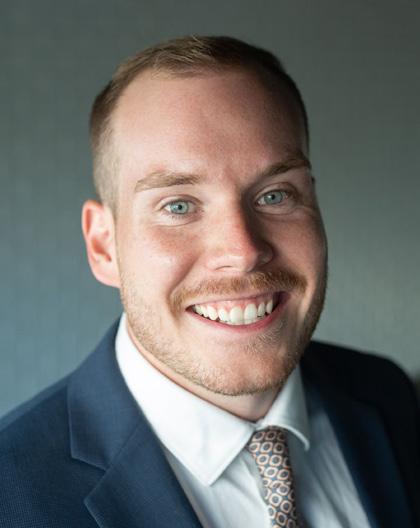
at The National Institutes of Health National Cancer Institute. The following year, Don moved to New Orleans to begin his training as a medical scientist at Louisiana State University Health Sciences Center New Orleans. Under the mentorship of Dr. Yang, he is currently investigating the use of a novel mouse model of type II diabetes and obesity, in addition to developing innovative methods to evaluate and quantify the effects of drugs on metabolism in single cells. Throughout graduate school, he has been active in student government, volunteering at a nearby homeless shelter and preparing undergraduate students to submit medical school applications. Don enjoys running outdoors and working out at his local CrossFit gym in his free time. Up to this point, Don’s experience in science has been learning how it is done - not how it is regulated. As an ASPET Washington Fellow, Don hopes to learn more about the details behind science policymaking, and how to effectively use his working scientific knowledge in a manner that will allow him to contribute to this process.

The Pharmacologist • March 2023 36
Journal News
ASPET, BPS, and Wiley Announce Pharmacology Research & Perspectives (PR&P)



Deputy Editor-in-Chief/Editor-in-Chief Search
Pharmacology Research & Perspectives (PR&P) is currently seeking a new Deputy Editor-in-Chief, with the potential to advance to Editor-in-Chief, to perform daily leadership duties beginning January 1, 2024. This role contains two terms: the first term is the Deputy Editor-in-Chief position for one three-year term, and then, upon review, advancement to the Editor-in-Chief position for an additional three-year term.
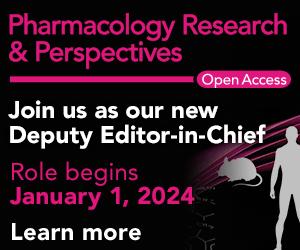
The Deputy Editor-in-Chief and Editor-in-Chief share editorial leadership responsibilities for PR&P. The peer review process is managed by Wiley using an online manuscript submission and peer review system. The position includes an honorarium. The deadline for nominations is June 1, 2023. Selfnominations are welcome.
PR&P is a collaboration between ASPET, the British Pharmacological Society, and Wiley. It is a Gold Open Access journal that publishes original research, reviews, and perspectives in all areas of preclinical and clinical pharmacology, therapeutics, education, and related research areas. PR&P has experienced significant growth in recent years, and the 2022 Impact Factor is 2.97.
The Deputy Editor-in-Chief will work with the Editor-inChief on the following responsibilities:
Editorial
■ Agree to and implement an ambitious editorial strategy.
■ Continually review and adapt the vision, mission, and scope of PR&P to increase its impact and visibility.
■ Take overall responsibility for the peer review system and workflow within the journal.
■ Evaluate submissions in accordance with the editorial policy and keep that policy under review.
■ Oversee recruitment for Editorial Board positions.
■ Write and commission editorial content for PR&P.
■ Identify and act on opportunities to gather high-quality content for the journal.
■ Communicate and engage with the PR&P Editorial Board to ensure they remain active and engaged and are acting as advocates for the journal.
37 The Pharmacologist • March 2023
Advocacy
■ Promote submissions to the journal.
■ Act as an advocate for PR&P at international meetings.
■ Represent the journal through attendance at the ASPET and BPS annual meetings.
■ Promote the importance of equality, diversity, and inclusion for the journal.
Collaboration
■ Work closely and collaboratively with the Societies and Wiley to ensure alignment of strategies and goals.
■ Establish a collaborative and effective working relationship with the in-house publications staff at both Societies and Wiley.
■ Engage with the Societies and Wiley on operational matters, including journal finances and marketing activities for the journal.
■ Report to the PR&P Management Committee at the twice-yearly meetings.
■ Contribute to the monthly PR&P Coordinating Committee calls.
■ Contribute to journal newsletters.
Personal Profile
■ An established pharmacologist with an excellent research and publication record.
■ Experienced as a journal editor, with strong critical analysis and appraisal skills, and a good understanding of peer review, publication ethics, and scientific publishing.
■ Knowledgeable about the Open Access publishing model/s and keen to explore new initiatives to develop PR&P in the Open Research landscape.
■ Able to lead and run an international editorial team.
■ Keen to work with the Societies, Wiley, and the Editorial Board to innovate and continuously improve the quality of PR&P
■ Effective in publicizing and promoting PR&P.
■ Able to commit regular time to working on the journal alongside existing commitments. Nominees must have experience serving on an editorial board of a pharmacology or relevant biomedical research journal. Before nominating a candidate, please make sure the person is willing to serve. Self-nominations and nominations should include a CV and a brief letter from the nominator (on their own behalf if self-nominating) expressing why this person would be a good candidate. A lengthier vision statement may be requested from candidates advancing to the interview stage.
The selection process will include telephone or online interviews with the top candidates and is expected to be completed no later than mid-September 2023. The incoming Deputy Editor-in-Chief will begin working with the outgoing Editor-in-Chief and Deputy Editor-in-Chief during the autumn and will assume all responsibilities of the Deputy Editor-in-Chief role effective January 1, 2024.
Nominations, including a brief supporting statement and the candidate’s CV, should be sent to Maria Pasho, ASPET Publications Director, at mpasho@aspet.org. Receipt of confirmation will be forthcoming.
Drug Metabolism and Disposition Marks Its 50th Anniversary with Celebration Collection
ASPET’s journal Drug Metabolism and Disposition (DMD) is celebrating 50 years of publication in 2023. The journal has published nearly 9,000 papers since 1973. For this anniversary, many special sections and commissioned articles are planned and will be published in a special 50th Anniversary Celebration Collection.
The January 2023 issue contains an editorial by Editorin-Chief Dr. Xinxin Ding, titled “Celebrating 50 Years of
Excellence in DMD Science.” In addition to providing his perspectives on the history and importance of DMD, Ding honored four individuals who have each published 80 or more papers in the journal. These individuals, who are recognized as “Most Prolific Author in DMD”, include: Drs. Curtis Klaassen, Miki Nakajima, Scott Obach, and Yuichi Sugiyama. Ding urges all Associate Editors, Editorial Advisory Board members, authors, and the DMD community at large to redouble their efforts to support the journal.
The Pharmacologist • March 2023 38
Five commissioned articles were published in the January issue. Articles for the collection will continue to be published in DMD throughout 2023. All content
in the DMD 50th Anniversary Celebration Collection is freely accessible through June 2024.
Dr. Ai-Ming Yu Selected as Publications Committee At-Large Member
ASPET’s Publications Committee is pleased to announce that Dr. Ai-Ming Yu has been selected to serve on the Publications Committee as an at-large member. His term was effective January 1, 2023, and runs through December 31, 2025.
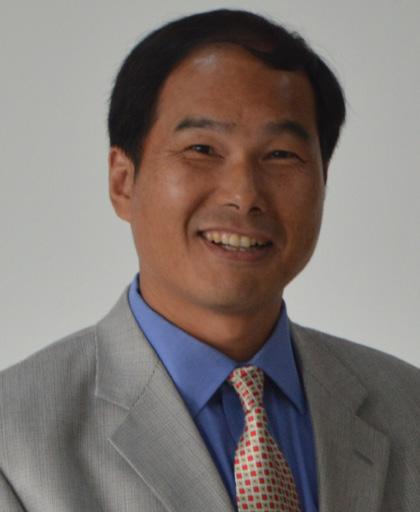
Dr. Yu is a tenured Professor in the Department of Biochemistry and Molecular Medicine, UC Davis School of Medicine. He obtained his B.S. at Central China Normal University in 1993 and Ph.D. at Nankai University in 1998. After completing his postdoctoral training at University of Washington (19982000) and West Virginia University (2000-2002) as well as a Research Fellow position at National Cancer Institute (2002-2004), Dr. Yu became an Assistant Professor at SUNY-Buffalo School of Pharmacy and Pharmaceutical Sciences in 2004, and he was tenured and promoted to Associate Professor in 2010. Dr. Yu
moved to UC Davis School of Medicine in 2013, and he became a Full Professor in 2016.
Make ASPET your professional home.
or graduate student for $40/yr and take advantage of tools and resources available to advance your career, promote your research and discipline, and build lasting relationships with fellow scientists.
He has been an ASPET member since 2008 and has served in various capacities, including Member, Programming Committee (2019-22), DMDD Chair (20182021), DMDD Communication Officer (2014-2015), President of Upstate New York Pharmacology Society of ASPET (2012-14), and DMDD Councilor (2010-14). His current editorial responsibilities include DMD, Acta Pharmaceutica Sinica B (APSB), and Pharmacogenomics Research and Personalized Medicine. His previous editorial experience includes Guess Editor of the Research Topic Post-transcriptional Regulation and Its Misregulation, Frontiers in Cell and Developmental Biology (2022); the Special Issue on RNA Therapeutics, Biochemical Pharmacology (2021); Guess Editor of the Special Issue on Drug Metabolism and Transport, APSB (2016); EAB member, DMD (2013-2018); AE of MicroRNA (2012-2020) and Frontiers in Bioengineering and Biotechnology (2018-2022), and others.
A growing ASPET means greater recognition for the field of pharmacology, more resources and support for our members, and a louder voice with policy makers. Some benefits include:
• Awards and recognition opportunities
• Networking and mentoring opportunities
ASPET your professional home.
Make
• Free membership in ASPET Divisions












• Free or reduced registration fees for ASPET webinars or meetings
• Free full-text access to ASPET journals
Join ASPET as an undergraduate student for $10/yr or graduate student for $40/yr and take advantage of tools and resources available to advance your career, promote your research and discipline, and build lasting relationships with fellow scientists.
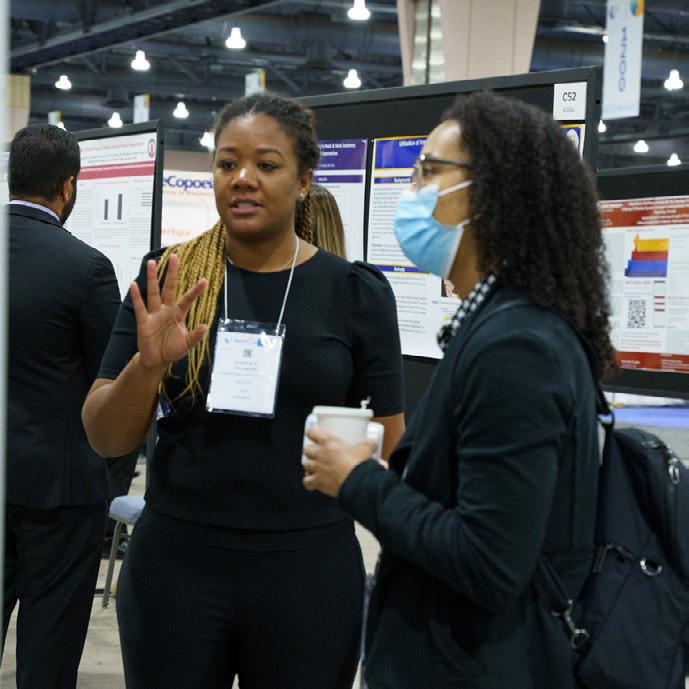


For a full listing of our benefits visit www.aspet.org or contact the membership department at membership@aspet.org.
To learn more about ASPET member benefits, visit www.aspet.org or contact the membership department at membership@aspet.org.
A growing ASPET means greater recognition for the field of pharmacology, more resources and support for our members, and a louder voice with policy makers.
Some benefits include:
A growing ASPET means greater recognition for the field of pharmacology, more resources and support for our
39 The Pharmacologist • March 2023
ASPET as an undergraduate student for $10/yr or
student for $40/yr
advantage of tools and
available
advance
Join
graduate
and take
resources
to
your career, promote your research and discipline, and build lasting relationships with fellow scientists.
professional
Join ASPET as an undergraduate student for $10/yr
Make ASPET your
home.
New Additions to Pharmacological Reviews and JPET Editorial Boards
The Publications Committee recently approved the following new Associate Editors for Pharmacological Reviews:
■ Dr. Hamid I. Akbarali, Virginia Commonwealth University, Richmond, VA
■ Dr. Matthew Banks, Virginia Commonwealth University, Richmond, VA
■ Dr. Mattias Carlström, Karolinska Institutet, Solna, Sweden
■ Dr. A.H. Jan Danser, Erasmus University Medical Center, Rotterdam, Netherlands
■ Dr. Ali Eid, Qatar University, Doha, Qatar
■ Dr. Thomas Gudermann, Ludwig-Maximilians-Universität München, München, Germany
■ Dr. Grace Guo, Rutgers University, Piscataway, NJ
■ Dr. Volker Lauschke, Dr. Margarete Fischer-Bosch Institute of Clinical Pharmacology, Stuttgart, Germany, and Karolinska Institutet, Stockholm, Sweden
■ Prof. Rebecca Ritchie, Monash University, Parkville, Victoria, Australia
The Committee also recently approved the following new JPET Associate Editors (AE) and Editorial Advisory Board (EAB) members:
AE:
■ Dr. Carolyn Fairbanks, University of Minnesota, Minneapolis, MN
■ Dr. Eric Gross, Stanford University, Stanford, CA
■ Dr. Fadi Khasawneh, Texas A&M University, Kingsville, TX
■ Dr. M. N. V. Ravi Kumar, The University of Alabama, Tuscaloosa, AL
■ Dr. Rheal Towner, University of Prince Edward Island, Canada
EAB:
■ Dr. Traci Czyzyk, Merck Research Laboratories, South San Francisco, CA
■ Dr. Kerry Goralski, Dalhousie University, Halifax, NS, Canada
■ Dr. J. Silvio Gutkind, University of California San Diego, La Jolla, CA
■ Dr. Yagna PR Jarajapu, North Dakota State University, Fargo, ND
■ Dr. Anna Malykhina, University of Colorado, Aurora, CO
■ Dr. Lauren May, Monash University, Clayton, Victoria, Australia
■ Dr. Tetsuo Nakata, Kyoto Pharmaceutical University, Kyoto City, Japan
■ Dr. Kelly Standifer, The University of Oklahoma College of Pharmacy, OU Health Sciences Center, Oklahoma City, OK
■ Dr. Qiming Jane Wang, University of Pittsburgh, Pittsburgh, PA
■ Dr. Hideyuki Yamawaki, Kitasato University, Towada City, Japan
■ Dr. Elizabeth Yeh, Indiana University School of Medicine, Indianapolis, IN
The Pharmacologist • March 2023 40
The Publications Committee thanks them and all ASPET editorial board members for their service and dedication to the Society’s journals.
NEW JPET EDITORIAL BOARD MEMBERS

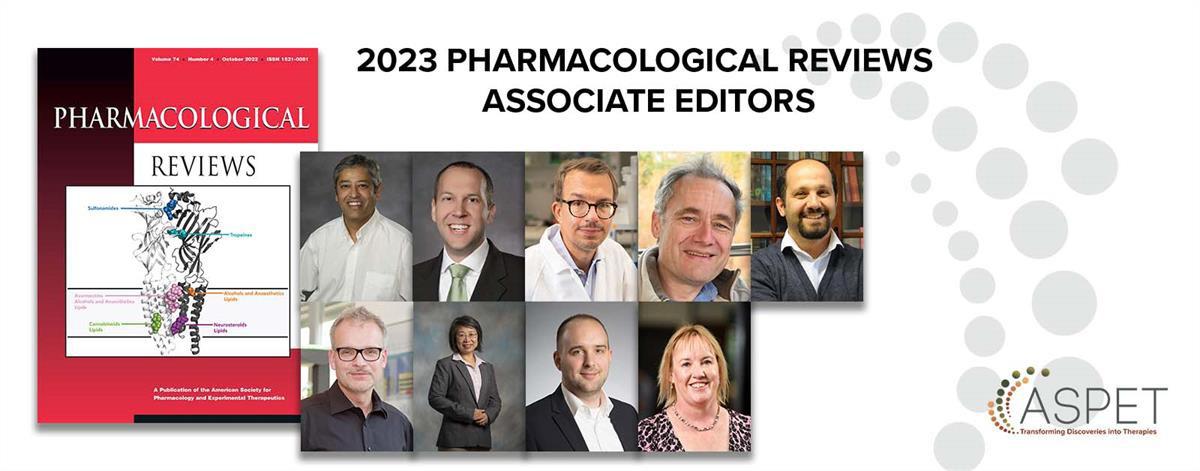

41 The Pharmacologist • March 2023 NEW
Announcing Two Exciting Developments at Pharmacological Reviews
We are pleased to announce two new initiatives at Pharmacological Reviews. In January 2023, we introduced Fast Forward publication, where articles will now be available online shortly after they are accepted for publication.
Also, we have increased PharmRev issues from four to six per year. Issues will be published in January,
March, May, July, September, and November. These changes will reduce the time for authors to see their articles posted online and appear in the finalized issue. They will also increase the frequency of providing comprehensive reviews to our readership.
We are excited about these changes, which will further increase the journal’s high impact.
Call for Papers on Medical Countermeasures for JPET
The Journal of Pharmacology and Experimental Therapeutics is planning for a special section on Medical Countermeasures for publication in the February 2024 issue. Original research pertaining to medical countermeasures (MCs) against chemical, biological, radiological, and nuclear (CBRN) threats, as well as opioid toxicity, will be considered for publication. MCs are promising therapeutic agents for mitigating the acute and/or chronic sequel after toxic exposure. Chemical threats are toxic compounds that could be used in a terrorist attack or accidentally released from production, storage, shipping, or other disasters. They include neurological, respiratory, vesicating, ocular, and pharmaceutical-based agents.
The special issue will broadly cover antidotes and translational research on MCs for CBRN threats. It will feature research elucidating short- and long-term mechanisms of toxic exposure-related illness, profiling clinical features, developing diagnostic tests and evaluating lead drugs to minimize symptoms and disease progression in the military and civilian populations.
Full-length manuscripts describing repurposed and innovative MC drug interventions, as well as evaluation of existing treatments, drug delivery systems, and improved therapeutics for current and emerging CBRN threats are especially welcome. Journal editors highly encourage research papers describing innovative in
vitro-in vivo toxicity models/mechanisms, sex and age differences and preclinical/clinical evaluation of lead compound(s) against chemical agents, opioid toxicity, and infectious threat agents.
Research article topics for consideration include epidemiology, model systems, and preclinical and clinical drugs for Gulf War illness. Reports on novel mechanisms, signaling pathways, and therapeutic targets for understanding and reversing the effects of an overdose and the observed toxicities caused by acute potent opioid exposure and overdose toxicity are also considered. Please send a pre-submission inquiry including title, author information, abstract, and significance statement to The Journal of Pharmacology and Experimental Therapeutics prior to full submission.
Original articles addressing any aspects of the aforementioned topics will be considered. Authoritative status reports/reviews on the progress of CBRN research and advanced MCs will be considered. The guest editor, Dr. Samba Reddy, will review these inquiries, respond to the authors with comments, and assess whether final approval will be granted for a full submission. There is no page charge for publishing in this special issue; the accepted manuscript version is published immediately online. All submissions must refer to the journal Instructions to Authors, and the submission deadline is May 31, 2023.
The Pharmacologist • March 2023 42
ASPET Journals Top Reviewer Awards
The ASPET Journals Top Reviewer Awards were established to recognize the top-performing reviewers from the previous 24-month period using various metrics. The top-performing reviewer from each journal is being recognized for their time, dedication and expertise as an ASPET volunteer manuscript reviewer.
Drug Metabolism and Disposition
Hyunyoung Jeong, PharmD, PhD
Dr. Hyunyoung Jeong is a Professor in the Departments of Industrial and Physical Pharmacy and Pharmacy Practice at Purdue University. Dr. Jeong completed 23 reviews in a 24-month period. The average turnaround time was five days.
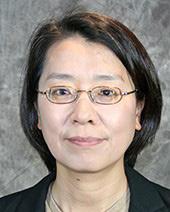
Journal of Pharmacology and Experimental Therapeutics
Mahmood S. Mozaffari, PhD, DMD, FAHA
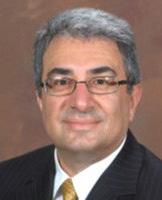
Dr. Mahmood S. Mozaffari is a Professor at Augusta University. Dr. Mozaffari completed 11 reviews in a 24-month period. Th average turnaround time was five days.
Molecular Pharmacology
Angeline M. Lyon, PhD
Dr. Angeline M. Lyon is an Assistant Professor of Biochemistry at Purdue University. Dr. Lyon completed 8 reviews in a 24-month period. The average turnaround time was 11 days.

Consider submitting your work to an ASPET Journal!
ASPET members gain access to all content in the journals, along with reduced or waived fees if they publish.
ASPET publishes four highly respected and widely read journals that provide rapid publication and easy access on mobile devices, tablets and desktop computers. The society co-publishes a wholly open access journal with the British Pharmacological Society and Wiley. Since the launch of JPET in 1909, ASPET has provided scientists in pharmacology and related fields with leading primary research and review articles. ASPET members have access to all journal content as a member benefit.
Visit https://www.aspet.org/aspet/journals to learn more about ASPET journals.
43 The Pharmacologist • March 2023
Highlighted Trainee Authors
Congratulations to the latest Highlighted Trainee Authors selected for Drug Metabolism and Disposition, The Journal of Pharmacology and Experimental Therapeutics, and Molecular Pharmacology:
Drug Metabolism and Disposition
■ Sheena Sharma (Washington State Univ.) – December
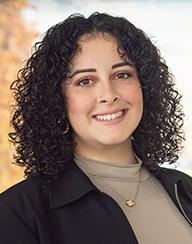

■ Eliza McColl (Univ. of Toronto) –January


■ Dr. Andrew Huber (St. Jude Children’s Research Hospital) –February
JPET
■ Andrew Heitman (Georgetown Univ.) – December


■ Gavin McAllister Traber (Univ. of California, Davis) – January
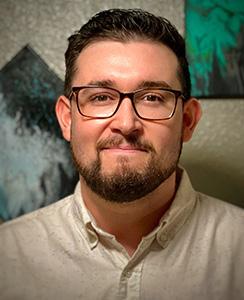
■ Sarah Elizabeth Davis (Univ. of South Carolina) – February
Molecular Pharmacology
■ Gissell Sanchez (Univ. of Michigan) – December
■ Victor Jun Yu Lim (Philipps-Univ.) –February
A brief description of their areas of research, current projects, the anticipated impact of their work, and what they enjoy when not in the lab is online at https://bit.ly/2yX1YeH. We congratulate all of them for being selected.

The Pharmacologist • March 2023 44
Andrew Heitman
Gavin McAllister Traber
Sarah Elizabeth Davis
Sheena Sharma
Eliza McColl
Gissell Sanchez
Victor Jun Yu Lim
Dr. Andrew Huber
Membership News
New Members
Affiliate Members



Anna Denaly Cab Gomez, Michigan State Univ
Stephanie Karzon Abrams, Neurology Centre of Toronto, CA
Song Lin, Astex Pharmaceuticals Inc., CA
Vamshikrishna Reddy Mannem, LS Solutions Inc, NJ
Diane Ramsden, AstraZeneca, MA
Robert P. Seibolt, MRIGlobal, MO
Regular Members
Saurabh Agarwal, St. John’s Univ
Salim Al-Rejaie, King Saud Univ, Saudi Arabia
Tyler S. Beyett, Harvard Medical School, MA
Kamila Bledzka, Cleveland Clinic, OH
Tao Che, Washington Univ Sch of Med, MO
Chun-Liang Chen, Purdue Univ, IN
Kevin Colizza, GlaxoSmithKline, PA
Aaron S. Devanathan, Univ of Pittsburgh, PA
Julie L. Engers, Vanderbilt Univ, TN
Stephanie C. Gantz, Univ of Iowa
Weiguo Han, Univ of Arizona
Rafaela C. Hell, Stanford Univ Med Ctr, CA
Naoto Hoshi, Univ of California, Irvine
Tanvirul Hye, Oakland Univ William Beaumont School of Medicine, MI
Amanda H. Klein, Univ of Minnesota
Konstantin Komolov, Thomas Jefferson Univ, NJ
Yevgeniya E. Koshman, AbbVie, IL
Valerie Kramlinger, Vanderbilt Univ, TN
Sunil Kumar, St. John’s Univ, NY
Lila P. LaGrange, Univ of the Incarnate Word, TX
Francesca Levi-Schaffer, The Hebrew Univ of Jerusalem, Israel
Chi Li, Univ of Louisville, KY
Erika M. Lisabeth, Michigan State Univ, MI
Arturo Mancini, Domain Therapeutics, Canada
Ezequiel Marron, Univ of Minnesota, MN
Marvin J. Meyers, Saint Louis Univ, MO
Tetsuo Nakata, Kyoto Pharmaceutical Univ, Japan
Taeyeop Park, Univ of Texas HSC, McGovern Med Sch
Kyle E. Parker, Washington Univ Sch of Med
Stevan Pecic, California State Univ Fullerton
Marcia H. Ratner, Boston Univ School of Medicine, MA
Daniel Scotcher, Univ of Manchester, UK
Yan Shu, Univ of Maryland
Lisan Smith, Carle Illinois Coll of Med
Jianguo Sun, China Pharmaceutical Univ, China
Surabhi M. Talele, Bristol Myers-Squibb, NJ
Kayla Temple, Vanderbilt Univ, TN
Sokol V. Todi, Wayne State Univ School of Medicine, MI
Rheal A. Towner, Univ of Prince Edward Island, Canada
Suzanne Underhill, National Institutes of Health, MD
Katerina Venderova, Kaiser Permanente Bernard J. Tyson School of Medicine, CA
Jin Wang, Baylor College of Medicine, TX
Zijun Wang, The Univ of Kansas
Dionna W. Williams, Johns Hopkins Univ, MD
Xiangmeng Wu, College of Pharmacy, Univ of Arizona
Shuang Yang, Univ of Arizona
Zhu Zhou, City Univ of New York
Postdoctoral Members
Emna Abidi, Cleveland Clinic Abu Dhabi, United Arab Emirates
Reem T. Attia, Future Univ in Egypt
Mengqi Chai, Washington Univ at St Louis, MO
Chelsea DeLeon, Univ of North Carolina-Chapel Hill
Marie A. Doyle, Vanderbilt Univ, TN
Haneen Dwaib, Palestine Ahliya Univ
Charu Gupta, Univ of Michigan
Jianming Han, Washington Univ in St.Louis, MO
Jomana Hatahet, AbbVie, IL
Andrew Heitman, Georgetown Univ, DC
Kehinde Idowu, Texas Southern Univ
Takahiro Ishimoto, Kanazawa Univ, Japan
Esraa Kabil, Faculty of Medicine - Ain Shams Univ, Egypt
Stephanie Kereliuk, Temple Univ, PA
45 The Pharmacologist • March 2023
Humaira M. Khan, Lahore College for Women Univ, Pakistan
Hui Li, Univ of Arizona, Coll of Pharmacy, AZ
Mengchu Li, Univ of Michigan
Malabika Maulik, Marshall Univ, WV
William McClintic, Univ of Tennessee
Nikhil Y. Patil, Univ of Oklahoma HSC
Dilip K. Singh, Washington State Univ Spokane
Silvia Squillace, Saint Louis Univ, MO
Maria A. Voronkova, West Virginia Univ
Weiyi XiaMed, Univ of Hong Kong, Hong Kong
Graduate Student Members
Akua A. Acheampong, Duke, NC
Yeseul Ahn, Texas Tech Univ Hlth Sci Ctr
Anoud S. Ailabouni, Washington State Univ
Adesanya A. Akinleye, Univ of Mississippi Medical Center
Olalekan C. Akinsulie, Washington State Univ
Rana Alabdali, Univ of Rochester, NY
Rehab A. Alharbi, Howard Univ
Nadeen Anabtawi, Ohio State Univ
Jeannes Angelia, California State Univ
Brandon M. Baker, North Carolina A&T State Univ
Tyler F. Bernadyn, Univ of Michigan
Sarah Bernhard, Washington Univ in St. Louis, MO
Rosalyn Bloch, Michigan State Univ
Miriam Brukhis, Univ of Washington
Tristram G. Buck, Loyola Univ, IL
Samantha T. Caico, Michigan State Univ
Lukas Caye, Univ of Minnesota
Stanley M. Cheatham, Virginia Commonwealth Univ
Ruiying Cheng, Univ of Massachusetts Lowell
Venkatlaxmi Chettiar, Gujarat Univ, NE
Brooke A. Christensen, Vanderbilt Univ, TN
Ian Chronis, Univ of Michigan
Danielle N. Cicka, Emory Univ, GA
Nina Cintron Pregosin, Stony Brook Univ, NY
Sabrina C. Daglish, Univ of North Carolina-Chapel Hill
Catherine O. Demery, Univ of Michigan Medical School
Presley D. Dowker-Key, Univ of Tennessee, Knoxville
Shubha R. Dutta, Univ of Tennessee HSC
Mohamed El-Emam, Pharos Univ in Alexandria, Egypt
Dina M. El-Gameel, Alexandria Univ Hospitals, Egypt
Ahmed Elshaarrawi, The Univ of Tennessee, Knoxville, TN
Mohammad Fauzan, Stony Brook Univ, NJ
Andrew W. Frazier, Univ of Texas Medical Branch
Wenqi Fu, Univ of Rochester, NY
Yue Gao, Sun Yat-sen Univ, China
Anthony M. Garcia, Univ of Michigan
Biwash Ghimire, Idaho State Univ
Nicholas B. Gill, Univ of Tennessee - Knoxville
Erin R. Gorman-Sandler, Univ of South Carolina
Ashley S. Gray, St. Jude Children’s Research Hospital, TN
Moana Hala’ufia, Univ of Iowa
Nicole Hall, Louisiana State Univ Health Shreveport, LA
Fatima A. Hamid, Univ of Minnesota
Tianran Hao, Univ of Washington
Ashley Henderson, Louisiana State Univ Hlth Sci Ctr
Basant Hens, Indiana Univ-Purdue Univ, IN
Emma M. Inmon, Saint Louis Univ, MO
Md Asrarul Islam, St Johns Univ, NY
Michal Jedrusiak, Jagiellonian Univ Medical College, VA
Tyler Jenkins, Auburn Univ, AL
Layne J. Jensen, SUNY at Buffalo, NY
B Malique Jones, Michigan State Univ
Carolyn J. Karns, Eastern Illinois Univ
Gracious D. Kasheke, Dalhousie Univ, Canada
Rhema C. Khairnar, St. John’s Univ, NY
Chloe C. Kirk, Univ of Miami, FL
Jessamine Kuehn, Univ of Wisconsin-Madison
Richard N. Lamptey, North Dakota State Univ
Quinn S. Lee, Univ of Illinois Chicago
Kangjun Li, Vanderbilt Univ, TN
Serena Lic, Univ of Alberta, Canada
Joe Jongpyo J. Lim, Univ of Washington
Megan Amber Lim, Carle Illinois College of MedicineUIUC
Haichang Luo, Univ of Minnesota
Miguel M. Madeira, Stony Brook Univ, NY
Janie McGlohon, Univ at Buffalo, NY
Sarah Melton, Louisiana State Univ Hlth Sci Ctr
Melissa Meschkewitz, Michigan State Univ
Marwa Mikati, Washington Univ in St. Louis School of Medicine, MO
Joseph N. Miller, St. Jude Children’s Research Hospital, TN
Tamara Morris, Louisiana State Univ Hlth Sci Ctr, LA
Ben Morrison, Saint John’s Univ, MA
Aishat Motolani, Indiana School of Medicine
Yong Myoung, Duquesne Univ, PA
Priyanka Naik, Purdue Univ, IN
Anna I. Neel, Wake Forest Univ Hlth Sciences, NC
Jacob Neethling, Univ of Illinois
The Pharmacologist • March 2023 46
Aiden-Hung P. Nguyen, Pacific Univ Sch of Pharmacy, OR
Le Tra Giang Nguyen, Univ of Connecticut
Makenzie Norris, Washington Univ School of Medicine, MO
Kyle D. Oberkrom, Saint Louis Univ, MO
Kayla Olstinske, Drake Univ, IA
Joseph M. Paggi, Stanford Univ, CA
Sharon Parkins, Univ of Cincinnati, KY
Mayuri Patwardhan, Univ of Massachusetts Lowell
Callie Porter, Utah State Univ
Megan C. Raddatz, Utah State Univ
Zeina Radwan, American Univ of Beirut, Lebanon
Ellen Riddle, Univ of Washington
Dayna M. Robinson, Drexel Univ, CT
Andrew Roney, Michigan State Univ
Drake A. Russell, The Univ of Washington
Robin J. Russo, Skaggs Graduate School, FL
Naresh Sah, Texas Tech Univ HSC
Kadidia Samassekou, Purdue Univ, IN
Paul Victor Santiago Raj, The Univ of Arizona College of Pharmacy
Mikaila I. Sass, Brigham Young Univ, UT
Pragya Saxena, Michigan State Univ
Rachel Schafer, Saint Louis Univ, MO
Elizabeth H. Schneider, Univ of Tennessee Health Science Center
Rhianne Scicluna, The Univ of Sydney, Australia
Sejal Sharma, Texas Tech Univ Health Sciences Center
Yue Shen, North Dakota State Univ
Faria Anjum Simin, Southern Illinois Univ
Evan Smith, Northeastern Univ, VT
Jack C. Stromatt, Ohio State Univ
Vicky Sun, Univ of Washington
Parul Suri, St. John’s Univ, NY
Shwetal Talele, Purdue Univ, IN
Shiwani Thapa, Univ of Texas HSC
Austin D. Thompson, The Univ of Arizona
Evan R. Tjeerdema, Univ of California, San Diego
Gavin M. Traber, UC Davis School of Medicine, CA
Madeline T. Van Fossen, Northern Michigan Univ
Jiaxing Wang, Univ of Texas HSC
Joyce Woo, Georgetown Univ, DC
Rongrong Wu, Univ of Macau, China
Tianzhou Xing, Creighton Univ, NE
Aprajita S. Yadav, Univ of Washington, WA
Linguxe Zeng, Univ of Massachusetts Lowell
Jingwen Zhu, St. Jude Children’s Research Hospital, TN
Yin Zhu, Univ of Pittsburgh, PA
Huixi Zouc, The Chinese Univ of Hong Kong, Hong Kong
Julio D. Zuarth Gonzalez, Texas Tech Univ Hlth Sci Ctr
Postbaccalaureate Members
Omolara Adeyemi, Univ of Michigan, NY
Emily Burke, McLean Hosp, MA
Kaitlin Castell, Uniformed Service Univ, DC
Aleigha A. Gugel, Univ of Iowa
Jordyn Margolis, Chapman Univ, CA
Bellina Mushala, Univ of Pittsburgh, PA
Undergraduate Members
Grace E. Bailey, Vanderbilt Univ, TN
Rishik Bethi, Vanderbilt Univ, TN
Isabela Bustamante, Trinity Univ, TX
Abigail L. Carr, Vanderbilt Univ, TN
Olivia J. Dodson, Michigan State Univ
Saba Ghodrati, Univ of Texas Health Science Center at San Antonio
Shalon L. Harvey, Univ of North Carolina-Chapel Hill
Ellen Kim, Michigan State Univ
Kennedy L. Kuchinski, Xavier Univ, WI
Grace K. Mahon, Virginia Commonwealth Univ
Alexander Z. Marler Chem, Univ of North Carolina
Mikolaj J. Marszalek, Medical Univ of Warsaw, Poland
Adam Mitchell, Washington Univ School of Medicine in St. Louis, MO
Ashley Murray, California State Univ - East Bay
Kit Neikirk, Univ of Hawaii
Alexandria V. Nowicki, Univ of South Carolina School of Medicine
Simon T. Tangen, Univ of Wisconsin - Eau Claire
Ryan C. West, California State Univ
Aaron Wong, Washington Univ in St Louis, MO
Reiya Yamashita, Kanazawa Univ, Japan
Cassandra Yuan, California State Univ-East
47 The Pharmacologist • March 2023
ASPET Pays Tribute to Its First Female Executive Officer
ASPET’s first female executive officer, Kay Crocker, passed away on January 9, 2023, at the age of 91. Crocker served as the executive officer from 1981 to 1997. She began her career with ASPET in 1977.

At the time, Crocker became the third executive officer of ASPET in its 100-year history. Her promotion from administrative support to executive officer marked a historical moment in time for ASPET. Prior to Crocker’s promotion, women in leadership at ASPET were women who were married to prominent male leaders.
Crocker’s rise within ASPET began with her work as an administrative assistant to the society’s previous executive officer, Houston Baker. She also served as the editor of ASPET’s quarterly magazine, The Pharmacologist. While she was familiar with ASPET’s programs and initiatives at the time, she has shared her story of the difficulties ASPET had with the decision to promote a woman to this major leadership position that was historically filled by a male.
For 20 years until her retirement, Croker served ASPET as it grew in membership and financial independence. Ironically, the last ASPET stand-alone, society-wide annual meeting was under her leadership in 1993. ASPET 2023 will be the first stand-alone meeting since then. Among her accomplishments, was her instrumental role in encouraging the formation of a Women’s Subcommittee of ASPET in 1980.
In 1987, the subcommittee, with encouragement from Croker, joined forces with the Women in Physiology Committee, to initiate an award for female scientists. For the first three years, the initial awards alternated between physiology and pharmacology
and involved a lecture at the annual meeting by the recipient and a plaque provided by the society. However, the Women’s Subcommittee of Women in Pharmacology felt strongly that the recognition of women scientists should include a significant monetary award and female scientists from other disciplines.
Croker’s commitment to ASPET is highly commendable, and ASPET is grateful for her dedication and hard work to ensure the society endured the difficult times and changes that occurred. She retired from ASPET in 1997.
Those who worked closely with Croker remember her fondly:
Thank you for informing us of Kay’s passing. Back then, ASPET had some financial issues related to their oversight of journals, and Kay was able to stabilize the finances and keep us afloat. She took pride in the society and her staff. She very much enjoyed the former FASEB campus setting and the stone wall that was part of the ASPET Executive Officer’s suite. She treated Council and members as family, and this instilled loyalty in the society and for the discipline of pharmacology. – Palmer Taylor, PhD, FASPET (ASPET President 1995-1996)
I worked with Kay throughout her career at ASPET. I was chair of the Program Committee early in her career and for about 10 years into her term as Executive Officer. She worked so hard to maintain excellent meetings during that time. I remember her sometimes working very late at night, being so committed to the society. Clearly, this is a sad loss for both ASPET and me as a friend. – William (Bill) Dewey,
PhD, FASPET
The Pharmacologist • March 2023 48
Members in the News



Dr. Samba Reddy Named Texas A&M University Regents Professor
This coveted honor recognizes Dr. Reddy for making extraordinary contributions in pharmacology.
Pharmacologist Dr. Samba Reddy is named for the Texas A&M University System Regents Professor Award, which is the highest honor bestowed by the System on faculty members.
https://vitalrecord.tamhsc.edu/two-texas-am-healthfaculty-named-regents-professors/
The TAMUS Board of Regents honors faculty whose performance in scholarship has been exemplary and distinguished. Dr. Reddy earned this coveted title for making extraordinary contributions and achievements that had an impact on, not only, their institution or agency, but also, the community, the state of Texas, and at the national and international levels.
Dr. Reddy earned pharmacy degree from Kakatiya University, masters and doctoral degrees from Panjab University, and completed a postdoctoral fellowship at the U.S. National Institutes of Health in Washington DC. He is a board-certified clinical pharmacist in the United States.
Presently, Dr. Reddy is a professor of Neuroscience and Experimental Therapeutics, Texas A&M School of Medicine, and director of Texas A&M Institute of Pharmacology and Neurotherapeutics. He joined Texas A&M in 2008, where he pioneered the field of neurosteroids by researching epilepsy neurotherapeutics. His seminal contributions include the discovery of a neurocode for treating epilepsy and
a novel neurosteroid-replacement therapy to treat epilepsy, women’s health and brain disorders.
Dr. Reddy’s transformational contributions led to the development of two new medicines: ganaxolone (Ztalmy), the first neurosteroid for epilepsy, and brexanolone (Zulresso), the first FDA-approved drug for postpartum depression, which are now used in clinics worldwide. He also discovered that neurosteroids can terminate hard-to-treat seizures, called status epilepticus, and his product was selected by the BARDA for phase 3 clinical trials in patients.
Dr. Reddy is a prolific inventor, holding several patents and inventions and 150 invited/keynote talks. Named one of the world’s top 2 percent of scientists by the Stanford University survey, he has published more than 220 papers/chapters and five popular textbooks, mentored and trained around 100 students and postdocs, and authored/co-authored around 450 presentations.
He has received awards from top scientific organizations in the United States, India and Europe, and is an elected fellow in three major organizations: the American Association for the Advancement of Science, the American Association of Pharmaceutical Scientists (AAPS), and the American Epilepsy Society. He is an associate/guest editor of Experimental Neurology, Current Protocols, Epilepsy Currents, and Frontiers in Aging Neuroscience journals. In 2020, Reddy received the AAPS Global Leader Award, a pivotal distinction for his stellar research contributions with an outstanding impact on public health worldwide.
Dr. Reddy is an ASPET member since 1999 and an active in divisions of Neuropharmacology, Drug Discovery and Development, and Translational

49 The Pharmacologist • March 2023
& Clinical Pharmacology. He is an Editorial Board Member of Journal of Pharmacology and Experimental
Dr. Manoranjan D’Souza Selected as Raabe College of Pharmacy Associate Professor
Dr. Manoranjan S. D’Souza, Associate Professor at Raabe College of Pharmacy, Ohio Northern University, was recently awarded the Pharmacy Centennial Alumni Chair for 2022-25. This competitive award is an endowed faculty position that recognizes achievement and
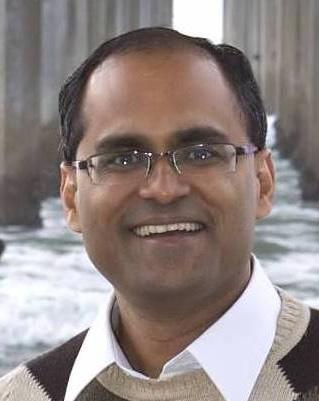
provides compensation and discretionary funding to further that faculty member’s work.
Dr. D’Souza is an Associate professor (2013-Present) at the Raabe College of Pharmacy, Ohio Northern University(ONU). At ONU, Dr. D’Souza primarily teaches neuropharmacology and his research focuses on neural mechanisms underlying drug addiction. Dr. D’Souza has authored several peer-reviewed original papers on neural mechanisms of drugs of abuse.

The Pharmacologist • March 2023 50
Therapeutics and Guest Editor of special issue of JPET on Medical Countermeasures.
Division News
2023 ASPET Division Elections
The following Divisions held elections for 2023. ASPET members transformed their votes into action by electing new leadership for the following divisions:
■ Division for Behavioral Pharmacology
■ Division for Cardiovascular Pharmacology
■ Division for Drug Discovery and Development



■ Division for Drug Metabolism and Disposition
■ Division for Pharmacology Education
■ Division for Molecular Pharmacology
■ Division for Toxicology
ASPET congratulates all newly elected chairs and secretary/treasurers to their respective division’s executive committee. The new officers will begin their terms on July 1, 2023.
Division for Behavioral Pharmacology
Chair-Elect
Brian Kangas, PhD

Director, Cognition Biology Laboratory, McLean Hospital
Assistant Professor of Psychiatry, Harvard Medical School
Secretary/Treasurer-Elect
Robert Warren Gould
Assistant Professor, Department of Physiology and Pharmacology, Wake Forest University School Medicine
Division for Cardiovascular Pharmacology
Chair-Elect
Michael Tranter, PhD


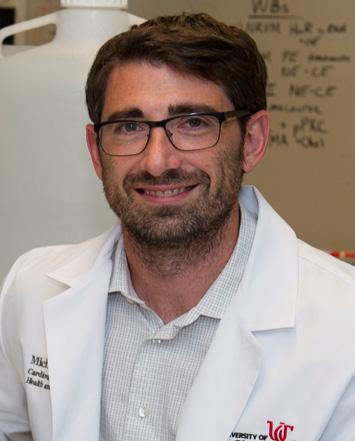
Assistant Professor, Department of Internal Medicine, Division of Cardiovascular Health and Disease, University of Cincinnati
Secretary/Treasurer-Elect
Boyd Rorabaugh, PhD
Professor and Chair, Department of Pharmaceutical Sciences, Marshall University School of Pharmacy
51 The Pharmacologist • March 2023
Division for Drug Discovery and Development
Chair-Elect
Alicja Urbaniak, MSc, PhD

Instructor, Department of Biochemistry and Molecular Biology, University of Arkansas for Medical Sciences
Secretary/Treasurer-Elect
Harishini Neelakantan, PhD

Executive Director, Research and Development, Ridgeliine Therapeutics
Division for Drug Metabolism and Disposition
Chair-Elect
Kerry Goralski, PhD
Professor, College of Pharmacy (Primary Appointment), Department of Pharmacy (CrossAppointment) and Department of Pediatrics (Cross-Appointment), Dalhousie University
Secretary/Treasurer-Elect
Klarissa Jackson, PhD

Assistant Profession, Division of Pharmacotherapy and Experimental Therapeutics, University of North Carolina at Chapel Hill Eshelman School of Medicine
Division for Pharmacology Education
Chair-Elect
Michael Lee, PhD


Associate Professor of Pharmacology, Geisel School of Medicine, Dartmouth College
Secretary/Treasurer-Elect
Diptiman Bose, MS, PhD

Associate Professor, Department of Pharmaceutical and Administrative Sciences, College of Pharmacy and Health Sciences, Western New England, and Director of Pharm D Distance
Learning Pathway, College of Pharmacy and Health Sciences, Western New England University
The Pharmacologist • March 2023 52
Division for Molecular Pharmacology
Chair-Elect
Michelle Kimple, PhD
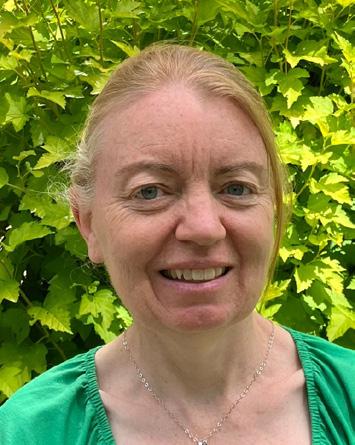
Professor, College of Pharmacy (Primary Appointment), Department of Pharmacy (CrossAppointment) and Department of Pediatrics (Cross-Appointment), Dalhousie University
Division for Drug Toxicology
Chair-Elect
Elaine M. Leslie, PhD
Professor, Department of Physiology, University of Alberta
Secretary/Treasurer-Elect
Smita Yadav, PhD
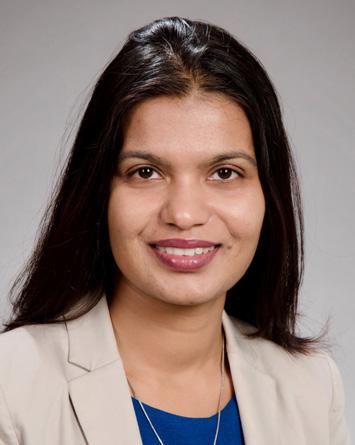
Assistant Professor, Department of Pharmacology, University of Washington and Faculty, Institute of Stem Cell and Regenerative Medicine, University of Washington
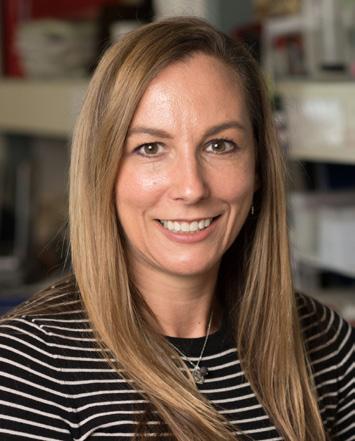
Secretary/Treasurer-Elect
Sudin Bhattacharya, PhD
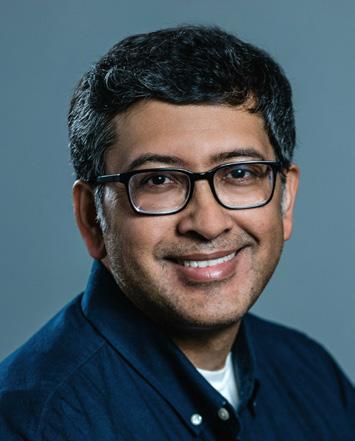
Assistant Professor, Pharmacology & Toxicology, Biomedical Engineering, Michigan State University
Get Involved with ASPET
ASPET is launching a Call for Volunteers to make it simpler for members to find ways to get involved. We welcome and value your time, talent, leadership and willingness to help advance ASPET's mission.
VOLUNTEERSIN ACTION
Volunteering in ASPET provides an opportunity to acquire new skills and improve existing ones, for instance, my leadership skills have been fostered and nurtured through my work in ASPET. I have also developed strong mentoring relationships and friendships that have been key to the forward motion of my career.
Namandjé N. Bumpus, PhD, President-Elect
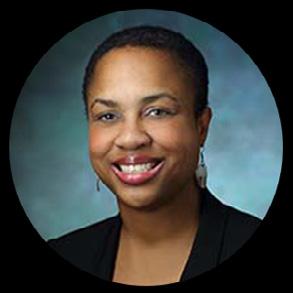
Sign up to volunteer with ASPET by Friday, April 28, 2023, to support the society in various leadership roles. Learn more at aspet.org/get-involved-with-aspet.

53 The Pharmacologist • March 2023
ASPET Division-Sponsored Awards
ASPET’s divisions sponsor several awards that are presented either annually or biennially to recognize excellence in their respective area of specialty.
Division for Behavioral Pharmacology
The ASPET Division for Behavioral Pharmacology is pleased to award Dr. Robert W. Gould, PhD from Wake Forest University School of Medicine the 2023 J.H. Woods Early Career Award in Behavioral Pharmacology.
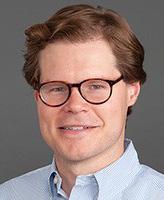
Dr. Gould is receiving this award to recognize that with his innovative research and diverse development, he has managed to combine measures of brain function with sophisticated behavioral assessments to exemplify the tradition established by J. H. Woods.
Dr. Gould is an assistant professor in the Department of Physiology and Pharmacology at Wake Forest University School of Medicine (WFUSOM). Dr. Gould earned his PhD in physiology and pharmacology at WFUSOM before completing a post-doctoral fellowship in the Department of Pharmacology and Warren Center for Neuroscience Drug Discovery at Vanderbilt University. His research pairs translational measures of brain function (PET, EEG, fMRI) in
preclinical species (rodents and nonhuman primates) with complex behavioral assessments to establish brain-behavior relationships to better understand function and treatment potential of selective compounds targeting various G-protein coupled receptors. Dr. Gould’s independent laboratory strives to conduct innovative and translational research to investigate novel treatment strategies and pharmacotherapeutic approaches, examining novel receptor allosteric modulators with a present focus on normalizing sleep and cognitive disturbances associated with substance use and other CNS disorders. Dr. Gould has been a member of ASPET since 2008.
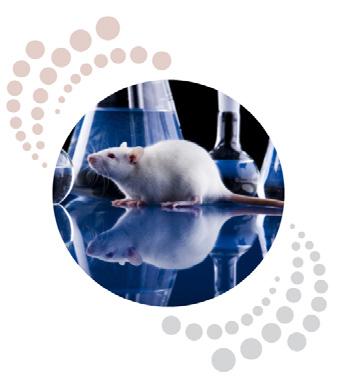
The award will be presented by the Division for Behavioral Pharmacology in conjunction with the ASPET 2023 Annual Meeting.
Division for Cancer Pharmacology
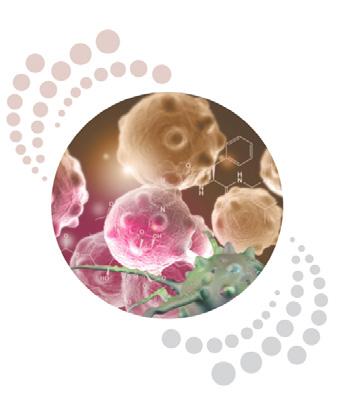
The ASPET Division for Cancer Pharmacology is pleased to award Dr. J. Silvio Gutkind PhD, FASPET from the University of California, San Diego the 2023 Susan Band Horwitz Award Lecture in Cancer Pharmacology. This award recognizing excellent original research by established investigators in cancer pharmacology, is named in honor of Dr. Horwitz who is a pioneer in discovering the mechanisms of action of cancer chemotherapy drugs many of which have been and remain mainstays of cancer therapy and whose work has changed the nature of cancer treatment.
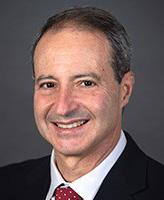
Dr. Gutkind is receiving this award in recognition of his pioneering work delineating the role of G-protein coupled receptors (GPCR) and their signaling networks on the progression of cancer and his commitment to mentoring the next generation of scientists.
Dr. J. Silvio Gutkind is an extraordinary scientist who has used innovative approaches to exploit emerging information on dysregulated signaling circuitries and individual genomic alterations in order to identify new therapeutic options to prevent and treat cancer. He pioneered the study of G proteins and G proteincoupled receptors (GPCR) in human malignancies, including the discovery of cancer promoting virally encoded GPCRs and mutated G proteins. He revealed
The Pharmacologist • March 2023 54
the complexity of their oncogenic signaling networks, thereby providing new signaling-based treatment options for Kaposi’s Sarcoma and ocular melanoma by targeting mTOR and FAK, respectively. He also discovered that persistent activation of the PI3K-mTOR pathway is the most frequent signaling mechanism dysregulated in oral cancers and led the clinical trials targeting mTOR for oral cancer prevention and treatment. Overall, Dr. Gutkind’s basic studies and
translational efforts have had a remarkable impact on the development of individualized, mechanismbased precision anticancer treatments and immunotherapeutic strategies. Dr. Gutkind has been a member of ASPET since 2015 and was designated a Fellow of ASPET in 2022.
The award lecture will be presented during the online VIP Award Lecture Series being held in May of 2023 in conjunction with the ASPET Annual Meeting.
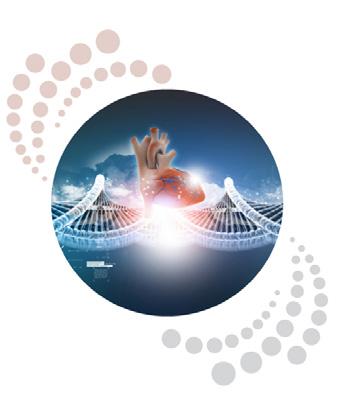
Division for Cardiovascular Pharmacology
The ASPET Division for Cardiovascular Pharmacology is pleased to award Dr. Eman Gohar, MS, PhD from Vanderbilt University the 2023 Benedict R. Lucchesi Young Scientist Travel Award in Cardiac Pharmacology. This award honors Dr. Lucchesi’s lifelong scientific contributions to our better understanding and appreciation of the pharmacological treatment and prevention of cardiovascular disease, and for his mentoring of countless prominent cardiovascular pharmacologists in translational approaches.
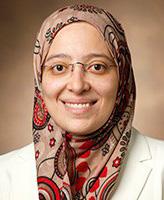
Dr. Gohar is receiving this award in recognition of her work on sex-differences in the regulation of blood pressure and renal sodium handling by estrogen signaling. After earning her bachelor of science degree in pharmacy, Dr. Gohar received her masters and PhD in pharmacology and toxicology from Alexandria University, Egypt and conducted postdoctoral research at the University of Alabama at Birmingham. Her lab, located at Vanderbilt University Medical Center is interested in understanding the molecular mechanisms underlying sex differences in hypertension and associated cardiovascular and renal disease. Her academic research is particularly focused on sex-differences in the regulation of blood pressure and renal sodium handling by estrogen signaling. By identifying a novel role in the G protein-coupled
estrogen receptor 1 (GPER1) in promoting natriuresis, lowering blood pressure and maintaining brush border health integrity, her research has identified GPER1 as potential therapeutic target for hypertension and salt sensitivity. The ultimate goal of Dr. Gohar’s laboratory is to develop sex-specific therapies for cardiovascular and kidney-related diseases. Dr. Gohar has been a member of ASPET since 2014.
The award will be presented by the Division for Cardiovascular Pharmacology on Saturday, May 20 during the ASPET 2023 Annual Meeting in St. Louis. Additionally, Dr. Gohar will present a lecture on her work, titled “Postmenopausal Hypertension: The Role of Estrogen Signaling and Pregnancy History” as part of the annual meeting.
55 The Pharmacologist • March 2023
Division for Drug Discovery and Development
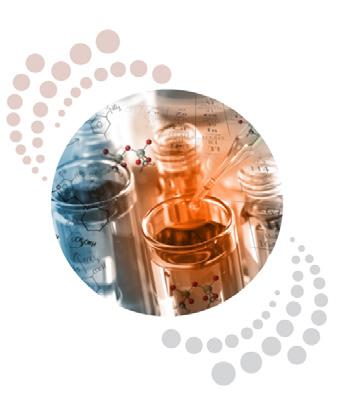
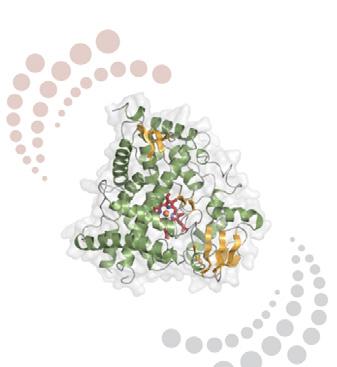
The ASPET Division for Drug Discovery and Development is pleased to award Dr. Thota Ganesh, PhD from Emory University the 2023 Scientific Achievement Award in Drug Discovery and Development. This award recognizes outstanding investigators that have made significant contributions in drug discovery, translational and/or drug development science.
Dr. Ganesh is receiving this award in recognition of his seminal innovative discovery and development of novel allosteric potentiators and competitive EP2 antagonist therapeutics to address challenging CNS diseases, as well as his sincere commitment to training the next generation of scientists by enabling access to STEM education in underdeveloped areas.
Dr. Thota Ganesh is an academic leader in the creation and development of novel compounds that attenuate inflammation and oxidative stress. His key contributions range across many subjects including the molecular basis of taxol-tubulin interactions, identification of the first allosteric antagonist of the prostaglandin EP2 receptor, identifying neuroinflammation targets that promote cognitive failure in epilepsy, sepsis and delirium models, and creating the first truly selective inhibitors of NADPH
oxidase 2. He has ten issued patents and is co-founder of Pyrefin, Inc., a company that is developing his EP2 antagonists towards clinical trials. Dr. Ganesh is an associate professor of pharmacology and chemical biology at Emory University. He was educated at Osmania University in Hyderabad, India through his PhD training, then completed postdoctoral work at the University of Durham in the United Kingdom and at Virginia Tech in the US before moving to Emory University. Moreover, he created and funds the Thota Foundation, which improves the education of schoolchildren in the rural village where he grew up. Dr. Ganesh has been a member of ASPET since 2019.
The award will be presented by the Division for Drug Discovery and Development on Saturday, May 20 during the ASPET 2023 Annual Meeting in St. Louis. Additionally, Dr. Ganesh will present a lecture on his work, titled “Discovery of Small Molecule EP2 Therapeutics to Attenuate Neuroinflammation and Cognitive Deficits in Epilepsy and Alzheimer’s Disease” as part of the annual meeting.
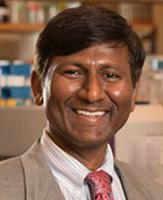
Division for Drug Metabolism and Disposition
The ASPET Division for Drug Metabolism and Disposition is pleased to award Dr. Klarissa D. Jackson from the University of North Carolina at Chapel Hill the 2023 Richard Okita Early Career Award in Drug Metabolism and Disposition.

Dr. Jackson is receiving this award in recognition of her translational research in drug metabolism and disposition focused on individual variations in cytochrome P450mediated drug metabolism and adverse reactions in patients from understudied ethnic backgrounds.
Dr. Klarissa Jackson is an assistant professor of pharmacy at the University of North Carolina at Chapel Hill (UNC) Eshelman School of Pharmacy in the Division of Pharmacotherapy and Experimental Therapeutics. She received her B.S. in chemistry from Jackson State University and
Ph.D. in pharmacology from Vanderbilt University, and then completed postdoctoral training at the University of Washington School of Pharmacy under the mentorship of Drs. Allan Rettie and Sidney Nelson. Prior to joining the UNC faculty in 2019, Dr. Jackson began her faculty career as an assistant professor at Lipscomb University College of Pharmacy in the Department of Pharmaceutical Sciences. Dr. Jackson’s research is supported by an NIH/NIGMS R35 Maximizing Investigators Research Award and focuses on understanding the underlying mechanisms of interindividual variability in drug metabolism and metabolism-induced toxicity in ethnically diverse populations. The long-term goal of her research is to
The Pharmacologist • March 2023 56
optimize drug therapy in understudied populations. Dr. Jackson has been a member of ASPET since 2013.
The award will be presented by the Division for Drug Metabolism and Disposition on Saturday, May 20 during the ASPET 2023 Annual Meeting in St. Louis. Additionally, Dr. Jackson will present a lecture on her work, titled “Drug Metabolism in Understudied Ethnic Populations” as part of the annual meeting.
The James R. Gillette Awards are presented each year by the ASPET Division for Drug Metabolism and Disposition for two outstanding papers published in the ASPET journal, Drug Metabolism and Disposition, during 2022.
The award recipient in the Pharmacokinetics/Drug Transporters category for 2022 is Kazuyoshi Michiba from the Laboratory of Molecular Pharmacokinetics, G raduate
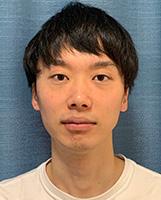
School of Pharmaceutical Sciences, University of Tokyo for the paper titled “Usefulness of human jejunal spheroid-derived differentiated intestinal epithelial cells for the prediction of intestinal drug absorption in humans.”
The award recipient in the Drug Metabolism category for 2022 is Daniel Rizzolo from the Ernest Mario School of Pharmacy, Rutgers University for the paper titled “Effects of Overexpression of Fibroblast Growth Factor 15/19 on Hepatic Drug Metabolizing Enzymes.”
The Gillette Awards will be presented by the Division for Drug Metabolism and Disposition on Saturday, May 20 during the ASPET 2023 Annual Meeting in St. Louis where the awardees will present short talks on their research.
Division for Division for Molecular Pharmacology
The ASPET Division for Division for Molecular Pharmacology is pleased to award Dr. Roshanak Irannejad, PhD from the University of California, San Francisco the 2023 Division for Molecular Pharmacology Early Career Award.
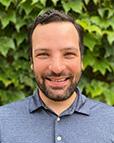
Dr. Irannejad is receiving this award in recognition of her pioneering use of nanobodies for probing spatial and subcellular signaling by G protein-coupled receptors (GPCRs) and her subsequent discoveries that have revolutionized and redefined our understanding of compartmentalized GPCR actions.
Dr. Irannejad has been a pioneer in the development of novel tools for exploring G protein and G proteincoupled receptor biology. With these tools she has redefined our thinking about how GPCRs function at locations other than the plasma membrane. These
ideas have resulted in both changes in the conceptual framework of the field and have opened up new avenues for development of more effective and selective therapeutic strategies. She received her PhD from Thomas Jefferson University and did postdoctoral training at the University of California, San Francisco where she currently is an assistant professor in the Department of Biochemistry and Biophysics. Dr. Irannejad has been a member of ASPET since 2021.
The award will be presented by the Division for Molecular Pharmacology on Saturday, May 20 during the ASPET 2023 Annual Meeting in St. Louis. Additionally, Dr. Irannejad will present a lecture on her work, titled “Regulation of Subcellular GPCR Signaling by Transporters” as part of the annual meeting.
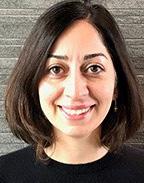

57 The Pharmacologist • March 2023
Division for Neuropharmacology
The ASPET Division for Neuropharmacology is pleased to award Dr. Patrick A. Forcelli, PhD from Georgetown University the 2023 Division for Neuropharmacology Early Career Award.
Dr. Forcelli is receiving this award in recognition for his innovative research in the area of the neural circuitry underlying epilepsy and anti-seizure medication effects on the developing brain.
Dr. Forcelli is a dedicated neuropharmacologist/ neuroscientist. He received his PhD from Georgetown University and has rapidly established his credentials in epilepsy research as a first-rate investigator, teacher and mentor to graduate students and post-doctoral fellows. He is an enthusiastic and productive collaborator and role model for other

young faculty. Moreover, he has made strong efforts to attract students from under-represented populations to his department and to guide them in his laboratory. Dr. Forcelli currently serves as the vice chair of the Department of Pharmacology and Physiology, an associate professor of pharmacology, physiology, and neuroscience (with tenure), and as the director of Graduate Studies for the PhD Program in Pharmacology & Physiology at Georgetown. Dr. Forcelli has been a member of ASPET since 2011.
The award will be presented by the Division for Neuropharmacology on Saturday, May 20 during the ASPET 2023 Annual Meeting in St. Louis. Additionally, Dr. Forcelli has been invited to give a lecture on his work as part of the annual meeting.
Division for Neuropharmacology
The ASPET Division for Neuropharmacology is pleased to award Dr. Anthony J. Baucum, II, PhD from the Indiana University School of Medicine (IUSM) the inaugural 2023 Division for Neuropharmacology Diversity, Equity and Inclusion Recognition Award. This award recognizes members who have made important contributions to the enhancement and promotion of diversity, equity and inclusion in the field of neuropharmacology.

Dr. Baucum is receiving this award in recognition for his comprehensive commitment to and success in mentoring students from underrepresented communities at all training levels (high school through postdoc) and advocating for DEI awareness at the local institutional as well as national levels.
Dr. Baucum completed his B.S. in biology from Loyola Marymount University in 1999. He performed Ph.D. training at the University of Utah in the laboratory of Dr. Annette Fleckenstein and received his Ph.D. in 2004. In 2006, he started postdoctoral training at Vanderbilt University in the laboratory of Dr. Roger Colbran. Dr. Baucum was promoted to research instructor in 2011, being the first Black faculty member in the Department
of Molecular Physiology and Biophysics. In 2013, he accepted a position at Indiana University-Purdue University Indianapolis (IUPUI) in the department of biology. He was promoted to associate professor with tenure in 2019. In July 2021, he joined the Department of Pharmacology and Toxicology at the IUSM. Dr. Baucum currently chairs the DEI committee in the department and serves on the Diversity Council at IUSM. In his free time, he enjoys spending time with his family and jogging and playing water polo. Dr. Baucum has been a member of ASPET since 2006.
The award will be presented by the Division for Neuropharmacology on Saturday, May 20 during the ASPET 2023 Annual Meeting in St. Louis. Additionally, Dr. Baucum will present a lecture on his work, titled “A Cell Type-specific Role for the Synaptic Protein Phosphatase 1-targeting Protein, Spinophilin, in Striatal Pathophysiology” as part of the annual meeting.


The Pharmacologist • March 2023 58
Division for Pharmacology Education
The ASPET Division for Pharmacology Education is pleased to award their 2023 Pharmacology Educator Awards to Drs. Ricardo A. Peña Silva, MD, PhD from the Universidad de los Andes, Nicholas L. Denton, PhD from Ohio State University, and Rheaclare Fraser-Spears, PhD from University of the Incarnate Word.
The primary goal of this award is to promote participation in the ASPET Annual Meeting by pharmacology educators and to foster career development in pharmacology education.
These awards will be presented at the Division for Pharmacology Education’s online Town Hall meeting in conjunction with the ASPET 2023 Annual Meeting.
Dr. Ricardo A. Peña Silva from the Universidad de los Andes is receiving this award in recognition of his dedication to pharmacology education and education research, in particular his involvement in faculty development and employing new teaching strategies.

Dr. Peña is an associate professor at the Medical School of the Universidad de los Andes, in Bogotá, Colombia. He received his MD degree at the Military University (Colombia) and a PhD in pharmacology from the University of Iowa. He is very interested in the intersection between biomedical sciences, education and health literacy in the community. At this time his laboratory is focused on: medical education and active learning methodologies to foster continuous ethical reflection during the analysis of dilemmas in medicine and pharmacology; misinformation in medicine and science – health and scientific literacy; implementation of information technologies and artificial intelligence to support curriculum development in pharmacology and medicine; and the impact of aging and inflammation and cerebrovascular disease. Dr. Peña has been a member of ASPET since 2007.
Dr. Nicholas L. Denton from Ohio State University is receiving this award in recognition of his involvement and innovation in teaching and his impressive careful course design and structure to close opportunity gaps to achieve equity in learning.
Dr. Denton joined the Ohio State University College of Pharmacy as a lecturer of pharmacy education and innovation after completing his PhD in Biomedical SciencesCancer Biology at Ohio State while conducting research at Nationwide Children’s Hospital and completing his postdoctoral training at Northwestern University. He strives to advance his teaching philosophy of “innovation through equity” by introducing students to the methodologies used to investigate the problems students observe in pharmacology while implementing equitable teaching strategies for persisting students into the diverse research teams necessary for providing a more complete perspective to complex challenges in pharmacology. Dr. Denton works to promote the pharmacology profession at all levels through evidence-based teaching innovations in inquiry-team-based learning and peer-instructorled social annotation, advancement in the scholarship of teaching and learning, development of equitable learning programs, mentoring students of all levels in pharmacology education, and promoting instructional development within the education community. Dr. Denton has been a member of ASPET since 2022.

Dr. Rheaclare Fraser-Spears from the University of the Incarnate Word is receiving this award in recognition for her dedication to teaching and developing new ways to address different learning styles.
Dr. Fraser-Spears has been an Assistant Professor in the Pharmaceutical Sciences

Department at Feik School of Pharmacy, University of the Incarnate Word since 2017. She teaches pharmacology to students in their third professional year covering musculoskeletal, endocrine, gastrointestinal, and neuropsychiatric disorders. Before joining FSOP, Dr.

59 The Pharmacologist • March 2023
Fraser-Spears completed a 4-year postdoctoral fellowship at UT Health San Antonio via competitive training programs – the Drug Abuse Research: Behavior and Neurobiology, and the Institutional Research Academic Career Development Award. Dr. Fraser-Spears received her Ph.D. in Pharmacology from the University of Michigan in Ann Arbor, and her B.S. in Biochemistry from Spelman
Division for Toxicology
College in Atlanta, GA. Dr. Fraser-Spears conducts neuropharmacology research studying conditions that alter the function of neurotransmitter transport proteins and their interactions with medications and new compounds. She has been a committed member of ASPET since 2011 and is passionate about serving as a role model in pharmacology research and education.
The ASPET Division for Toxicology is pleased to award Dr. José E. Manautou, PhD from the University of Connecticut the 2023 Division for Toxicology Career Award. Dr. Manautou is receiving this award in recognition of his many contributions toward understanding xenobiotic-mediated hepatotoxicity, his long-standing commitment to teaching and mentoring as well as his leadership in training programs for underrepresented groups.

Dr. Manautou is the Department Head of Pharmaceutical Sciences, Professor of Toxicology and Boehringer-Ingelheim Pharmaceuticals, Inc. Chair in Mechanistic Toxicology at the University of Connecticut School of Pharmacy. His long-term research interests are biochemical and molecular mechanisms of xenobiotic-induced hepatotoxicity and compensatory responses to liver injury that enhance tissue resistance to toxicant re-exposure. Dr. Manautou has published over 200 original research articles, abstracts, commentaries, and reports. He is also a Fellow of the Academy of Toxicological Sciences. He has
Division for Toxicology
earned national and international recognition as a scholar and educator for his service to the global toxicology community. He is Co-Editor-in-Chief of the journal Current Opinion in Toxicology and current President of the International Union of Toxicology. Dr. Manautou obtained his BS in pharmacy from the University of Puerto Rico, his PhD in pharmacology and toxicology from Purdue University, and did postdoctoral training at the University of Connecticut. He also conducted sabbatical training at the Academic Medical Center in Amsterdam. Dr. Manautou has been a member of ASPET since 2008.
The award will be presented by the Division for Toxicology in conjunction with the ASPET 2023 Annual Meeting in St. Louis.
The ASPET Division for Toxicology is pleased to award Dr. Ian Copple, PhD, BSc from the University of Liverpool the 2023 Division for Toxicology Early Career Award. Dr. Copple is receiving this award in recognition of his innovative research in mechanisms underlying the role of NRF2 in drug toxicity and his strong commitment to teaching and mentoring students.
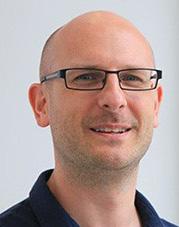
Dr. Copple is a senior lecturer (associate professor) in the Department of Pharmacology Therapeutics at the University of Liverpool, UK. He received his PhD from the University of Liverpool in 2008, and undertook post-doctoral training there, as well as at the Karolinska Institute in Sweden and University of Leiden in the Netherlands. He established his own research group in Liverpool in 2013, and gained tenure in 2016. Dr Copple’s research employs in vitro,
in vivo and clinical approaches, along with techniques including ‘omics, mass spectrometry, preclinical imaging and chemical biology, to understand the mechanisms by which cells sense and respond to chemical insults underlying drug toxicities, particularly through the cytoprotective NRF2 pathway. Dr. Copple has been a member of ASPET since 2021.
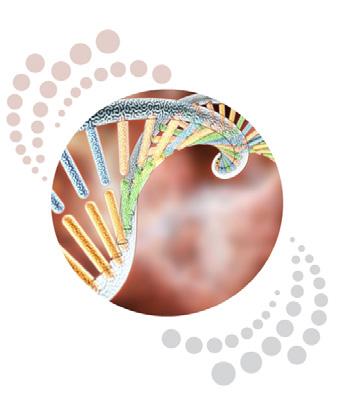
The award will be presented by the Division for Toxicology in conjunction with the ASPET 2023 Annual Meeting in St. Louis.

The Pharmacologist • March 2023 60
Division for Translational and Clinical Pharmacology
The ASPET Division for Translational and Clinical Pharmacology is pleased to award their 2023 Division for Translational and Clinical Pharmacology Early Career Awards to Drs. Melissa L. Barker-Haliski, PhD from the University of Washington and Jason A. Sprowl, PhD from the University at Buffalo, SUNY. These awards recognize excellence in translational and clinical pharmacology research that comes from early career scientists.
Dr. Melissa L. Barker-Haliski is receiving this award in recognition of her innovative use of translational epilepsy models in drug discovery, improving treatments for the unmet medical needs of special epilepsy patient populations.
Dr. Barker-Haliski received a BA in biology and French from the University of Oregon and a PhD in pharmacology and toxicology from the University of Utah. Dr. Barker-Haliski has performed in essential capacities within the biotechnology sector, including conducting preclinical drug discovery and testing at a start-up biotechnology company and a large pharmaceutical company. She co-chaired the American Epilepsy Society/International League Against Epilepsy’s Pharmacology Common Data Elements Working Group from 2014-2018 with the goal to harmonize preclinical pharmacology studies for epilepsy drug discovery by industry, government, and academia. From 2019-2022, she was an Institute for Translational Health Sciences KL2 Scholar. Her research at the University of Washington leads the identification of novel therapies using clinically relevant animal models to improve treatments for the unmet medical needs of special epilepsy patient populations, including those with drug-resistant epilepsy and epilepsy in older adults. Dr. Barker-Haliski has been a member of ASPET since 2009.
The award will be presented by the Division for Translational and Clinical Pharmacology on Saturday, May 20 during the ASPET 2023 Annual Meeting in St. Louis. Additionally, Dr. Barker-Haliski has been invited to give a lecture on her work as part of the annual meeting.

Dr. Jason A. Sprowl is receiving this award in recognition of his pioneering research studying the contribution of solute carriers in drug-induced toxicity and related transformative strategies that target these proteins while maintaining drug efficacy.
Dr. Sprowl is a highly productive and motivated assistant professor and KL2 scholar award recipient at the University at Buffalo who is an emerging leader in studying the role of solute carriers (SLCs) as contributors to drug efficacy and toxicity. Expanding our knowledge of SLCs and their regulation is expected to aid in predicting nutrient or xenobiotic disposition, as well as explain interpatient variability and response based on their activity. Dr. Sprowl’s expertise and contribution to this field is already represented by key contributions to more than twenty-five peer reviewed manuscripts in highly reputable journals (thirteen of which he is the primary or corresponding author) that are associated with SLCs and drug response. His research group is also currently investigating tyrosine kinase regulation of SLCs and how these events contribute to patient variability or life-threatening drug-drug interactions. This effort is currently supported by NIH/NIGMS R01 funding awarded to Dr. Sprowl. He has been a member of ASPET since 2018.
The award will be presented by the Division for Translational and Clinical Pharmacology on Saturday, May 20 during the ASPET 2023 Annual Meeting in St. Louis. Additionally, Dr. Sprowl will present a lecture on his work, titled “Regulation of Solute Carriers by Disruption of Tyrosine Kinases and Associated Clinical Outcome” as part of the annual meeting.
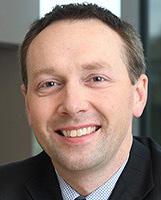

61 The Pharmacologist • March 2023






American Society for Pharmacology and Experimental Therapeutics (ASPET) 1801 Rockville Pike, Suite 210 Rockville, Maryland 20852-1633 PRSRT STD US POSTAGE PAID MANASSAS VA PERMIT #250 St. Louis Union Station Hotel May 18–21 Meet us in St. Louis! Scan to get the latest updates!












































 Ian A. Blair, PhD University of Pennsylvania
Ian A. Blair, PhD University of Pennsylvania

































































































